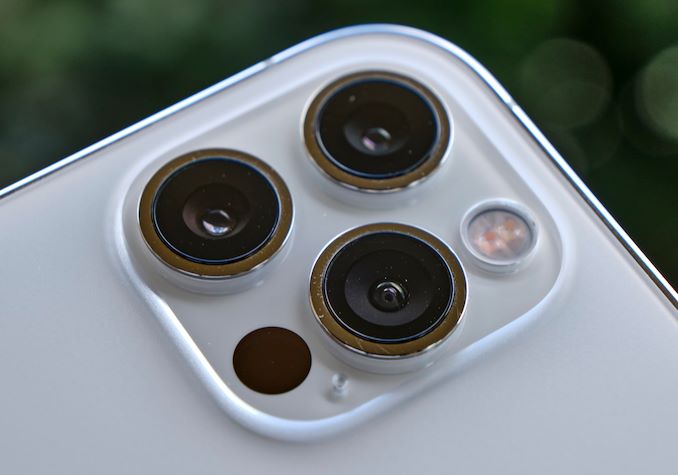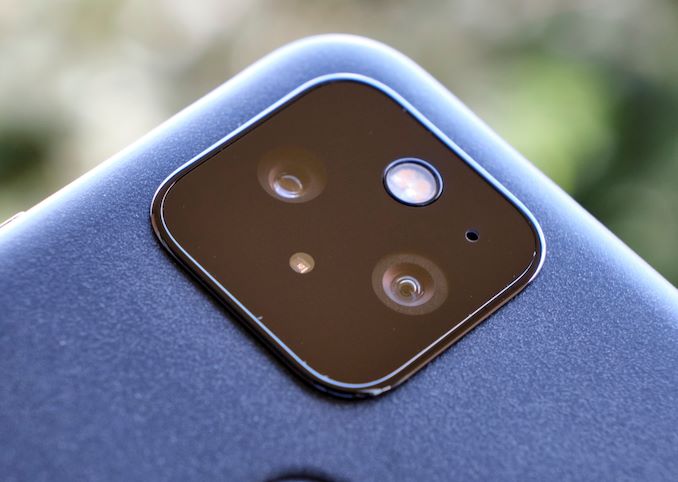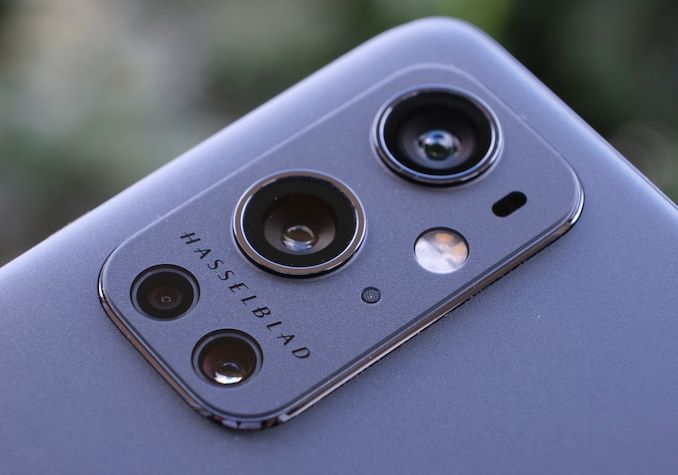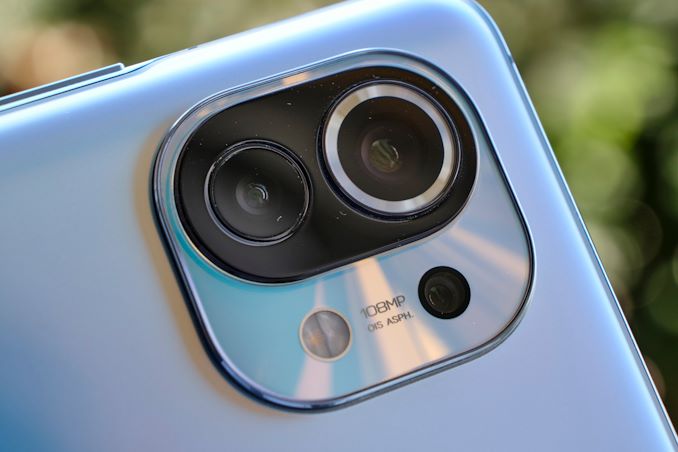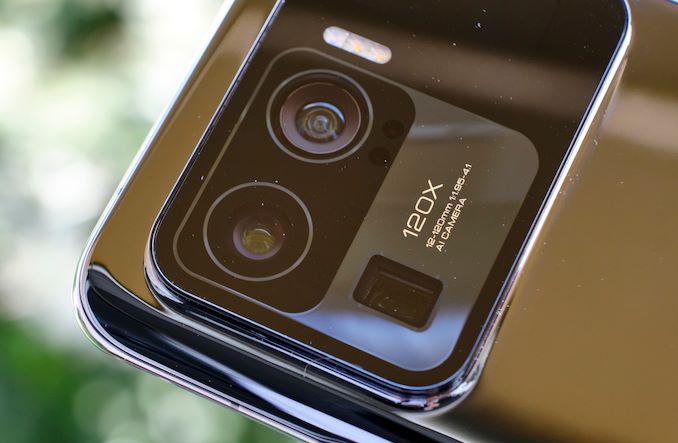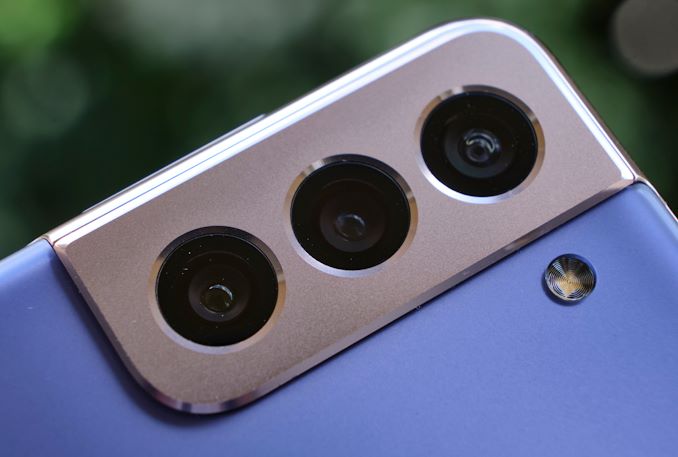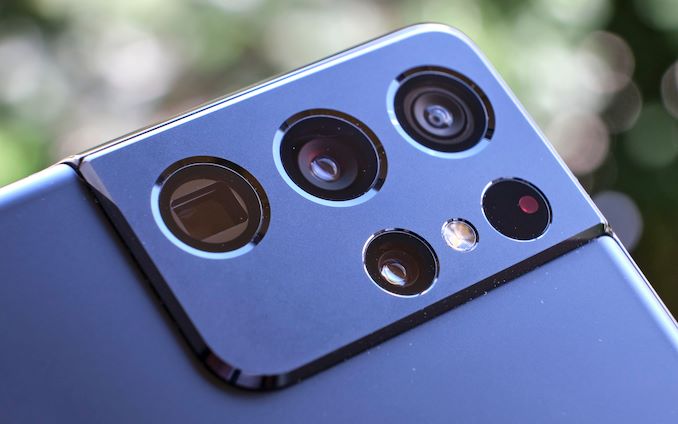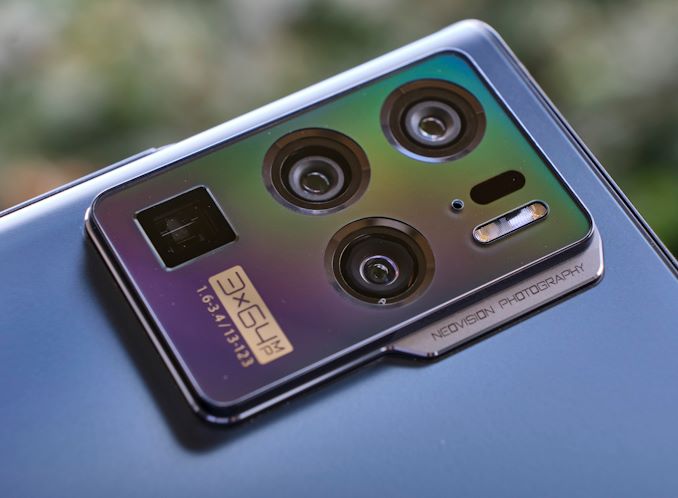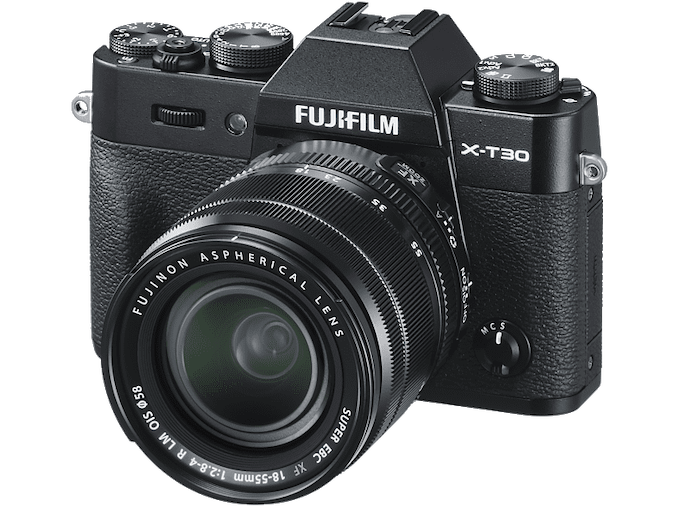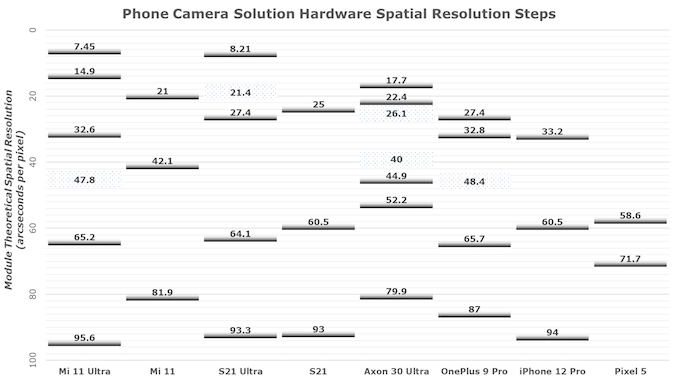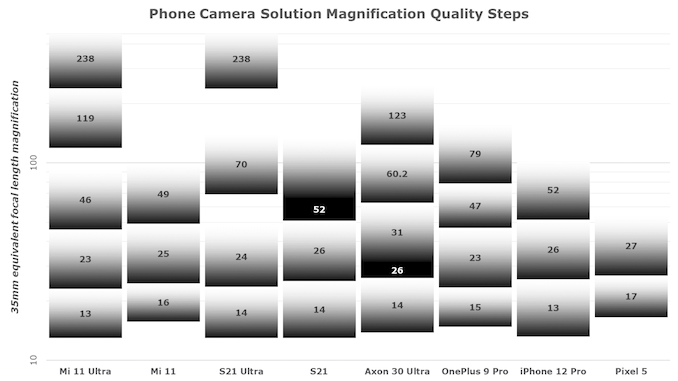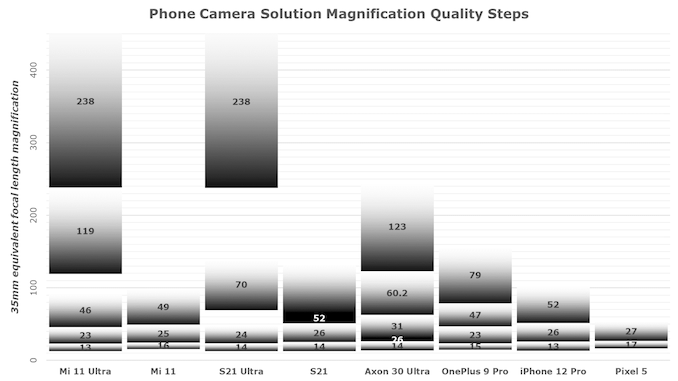
Original Link: https://www.anandtech.com/show/16753/mobile-flagship-phone-cameras-2021-h1-review-megapixels-telephotos-
Mobile Flagship Phone Cameras 2021 H1 Review: Megapixels & Telephotos
by Andrei Frumusanu on June 21, 2021 9:30 AM EST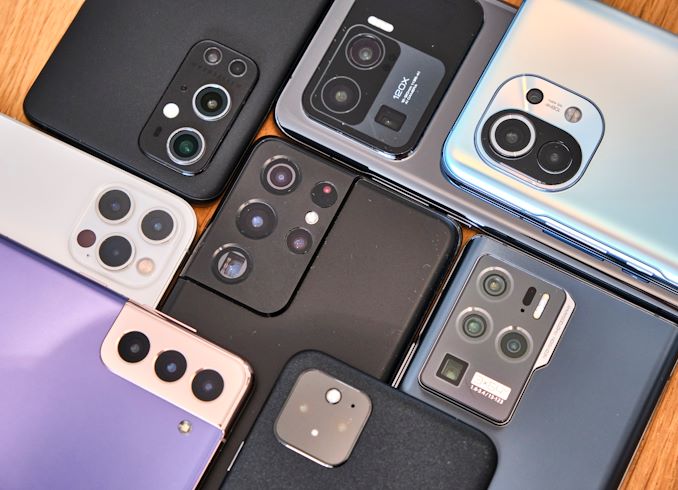
It’s been well over a year now since our last extensive camera round-up article, and it’s also been a few months now since the release of most of 2021’s flagship device releases, and it’s time to take a snapshot of the current smartphone photography landscape.
2020 and 2021 have been years where smartphone photography has changed quite a lot. The biggest change has been in the hardware that vendors are employing in their flagship camera systems, and the trend has been towards more exotic sensor solutions with high megapixel capabilities (with the ability to bin down to lower res, larger effective pixels), and more intricate optical systems, particularly on the telephoto end. While these trends don’t hold true for every device out there today, it’s actually the norm amongst most vendors rather than the exception.
Whilst the devices tested today have mostly been out for quite some time now, some even months or the better part of the year, being able to re-test cameras a bit of time after their releases is also an important step in evaluating the various vendors’ advancements in software updates. Unfortunately, especially amongst the many Android vendors, the camera software always seems to be the least polished aspect of new flagships, and it’s generally become the norm nowadays that devices such as Samsung’s Galaxy series perform quite differently a few months after their initial firmware and review cycle.
I wanted to take the opportunity to revisit some of those well-known devices today in lush sunny spring colours, instead of grey winter scenes, but to also visit a slew of new devices we haven’t had time to fully review yet. I’ll be briefly going over the device line-up and cover their camera setups, and what makes them stand out from the rest of the crowd:
Apple iPhone 12 Pro
| Apple iPhone 12 Pro | |||||||||
| Optics | Sensor | ||||||||
| 35mm eq. FL |
FoV (H/V/D) |
Aperture |
OIS | Resolution | Pixel Pitch |
Pixel Res. |
Sensor Size |
||
| Ultra-Wide | 13.23 | 105.2° 88.9° 117.1° |
f/2.4 | ✗ | 12.2M (4032 x 3024) |
1.0µm | 94.0″ | 1 / 3.17" 4.03mm x 3.02mm 12.19mm² |
|
| Main (Wide) | 25.77 | 67.8° 53.5° 80.0° |
f/1.6 | ✓ | 12.2M (4032 x 3024) |
1.4µm | 60.5″ | 1 / 2.26" 5.64mm x 4.23mm 23.89mm² |
|
| Telephoto | 51.54 | 37.1° 28.3° 45.5° |
f/2.0 | ✓ | 12.2M (4032 x 3024) |
1.0µm | 33.2″ | 1 / 3.17" 4.03mm x 3.02mm 12.19mm² |
|
Apple’s iPhone 12 Pro is amongst the “oldest” devices in the line-up, being released last October. Apple’s latest generation camera setup isn’t as much defined by the hardware characteristics of its modules, as much as it is by the software and image processing the latest iPhones take advantage of.
In terms of hardware, the iPhone 12 Pro is using a more conventional trio of camera modules, including a ultra-wide angle, wide angle (or main camera as I tend to call it), and a short telephoto unit at respectively 13.2, 25.7 and 51.5mm equivalent focal lengths. Optics for the modules vary quite a bit, with the main camera seeing an upgrade this generation through a new larger aperture f/1.6 lens system that allows for more light gathering capabilities compared to its predecessors.
The three cameras use 12.2MP sensors, with the main module using a 1/2.26” class unit with by today’s standards, medium sized 1.4µm pixels – the UWA and telephoto use smaller 1/3.17” sized sensors with 1.0µm pixel pitches. In terms of actual sensor sizes this actually translates to the main camera being able to roughly have almost twice the area.
A general note on the specification tables:
There’s apparently been some confusion in regards to the specs of Apple’s camera modules and sensor sizes, going as far as competitors wrongly misquoting the devices’ hardware specifications in presentations. The confusion lies in the fact that Apple tends not to actually present the actual numbers officially, as well as the fact that there’s been inconsistency in the way that vendors present their sensor sizes in inches. One has to note that the typical sensor size metric in fractional inches diagonal isn’t actually a real physical measurement of the sensor, but rather a value of the “optical format”, where the quoted size is actually a margin factor larger than the actual sensor. In the past we’ve had some inconsistencies in the part of Omnivision and Sony on this margin factor, leading to some apples-to-oranges quotes in optical format sensor size figures. For this article, I’m quoting all optical format sizes in a standardised 1.5x margin factor for consistency – which is matches with the PR of most camera sensors today.
Beyond the optical format size, I’m also quoting the actual physical active capture area dimensions and surface area in millimetres – the actual surface area figure will probably the best way to actually compare sensor sizes against each other.
As many vendors also don’t officially quote the focal lengths of their camera modules, I’ve also went ahead and calculated the actual 35mm equivalent focal lengths of the various devices listed today. Conversely, some vendors state focal lengths but don’t state the field of view, so I also added in those metrics as horizontal, vertical, and diagonal field of view values. Most companies quote the diagonal in their specs, but because we don’t tend to take pictures at 45° device angles, the long edge (horizontal) field of view figure is the one most applicable and familiar to the real world.
Besides the usual sensor specifications like resolution and pixel pitches, I’m also adding in the maximum theoretical optical resolving power for the modules in terms of arcseconds per pixel, in order discuss a few of the different hardware approaches vendors are taking nowadays. As a reminder for those unfamiliar, an arcsecond is 1/3600th of a degree, and given the field of view and the resolution we can simply determine the resolving power of the camera module.
Google Pixel 5
| Google Pixel 5 | |||||||||
| Optics | Sensor | ||||||||
| 35mm eq. FL |
FoV (H/V/D) |
Aperture | OIS | Resolution | Pixel Pitch |
Pixel Res. |
Sensor Size |
||
| Ultra-Wide | 16.53 | 92.6° 76.3° 105.2° |
f/2.2 | ✗ | 16.2M native (4650 x 3488) 12.2M scaled (4032 x 3024) |
1.0µm | 71.7″ | 1 / 2.75" 4.65mm x 3.48mm 16.21mm² |
|
| Main (Wide) | 26.87 | 65.6° 51.6° 77.7° |
f/1.73 | ✓ | 12.2M (4032 x 3024) |
1.4µm | 58.6″ | 1 / 2.26" 5.64mm x 4.23mm 23.89mm² |
|
Following the iPhone, the Google Pixel 5 is the second oldest device in the list, being released last November. In terms of hardware, Google here is also quite conservative as the sensors themselves haven’t changed compared to the Pixel 4 in 2019. The ultra-wide however is now for Google, although it’s not as aggressive at a 16.5mm equivalent focal length. What a bit weird is that Google employs a 16.2MP sensor for the UWA, however this resolution is only available for RAW pictures as general photography will have the phone downscale images to 12.2MP shots. The main sensor remains a “normal” 1.4µm 12.2MP unit with standard optics.
Google’s strengths have been in software processing, and the Pixel 5 introduces a newer HDR+ algorithm that is able to maintain more shadow details in shots, improving dynamic range and thus still competing quite well compared to devices with newer sensors, at least in good light conditions. The phone is the only device in the line-up lacking a telephoto solution, solely relying on multi-frame super-resolution upscaling from the main module to magnify subjects.
OnePlus 9 Pro
| OnePlus 9 Pro | |||||||||
| Optics | Sensor | ||||||||
| 35mm eq. FL |
FoV (H/V/D) |
Aperture | OIS | Resolution | Pixel Pitch |
Pixel Res. |
Sensor Size |
||
| Ultra-Wide | 14.79 | 99.0° 82.5° 111.3° |
f/2.2 | ✗ | 50.3M native (8192 x 6144) 12.6MP binned (4096 x 3072) |
1.0µm 2.0µm |
48.4″ 87.0″ |
1 / 1.56" 8.19mm x 6.14mm 50.33mm² |
|
| Main (Wide) | 23.40 | 72.9° 58.1° 85.5° |
f/1.88 | ✓ | 48.12M native (8000 x 6016) 12.0MP binned (4000 x 3008) |
1.22µm 2.24µm |
32.8″ 65.7″ |
1 / 1.43" 8.96mm x 6.73mm 60.37mm² |
|
| Telephoto | 78.53 | 24.9° 18.8° 30.8° |
f/2.4 | ✓ | 8.0MP (3264 x 2448) |
1.0µm | 27.4″ | 1 / 3.26" 3.26mm x 2.44mm 7.99mm² |
|
The OnePlus 9 Pro brings a new camera solution for the company’s new flagship. At the ultra-wide angle, we’re seeing a new 50.3MP native sensor that bins down to normal 12.6MP images, and features relatively large 1.0µm native and 2.0µm effective binned pixels. This actually results in a quite large 50.33mm² sensor area that’s actually bigger than most normal primary camera sensors of other devices. The module also is claimed to feature a low-distortion moulded lens system to allow for rectilinear optically corrected images, where as usually these corrections happen on a software level which degraded image quality.
The primary camera also uses a new 48MP sensor with 1.22µm native pixels, binning down to 12MP and 2.24µm pixels. The phone has a slightly wider than usual focal length at 23.4mm (generally I’m a fan of this), and an overall respectable aperture of f/1.88. As a 1/1.43” sensor, it’s not the largest amongst devices today, but it’s definitely above the norm of past few years.
As a telephoto, the OP9Pro employs a tiny 8MP sensor with 1.0µm pixels for 3x optical magnification / 78.5mm FL and f/2.4 optics. Generally, the weird thing about this solution is that it doesn’t give that much more resolving power than the main camera, as one pixel is 27.4 arcseconds on the telephoto vs 32.8 arcseconds on the regular module.
Xiaomi Mi 11
| Xiaomi Mi 11 | |||||||||
| Optics | Sensor | ||||||||
| 35mm eq. FL |
FoV (H/V/D) |
Aperture | OIS | Resolution | Pixel Pitch |
Pixel Res. |
Sensor Size |
||
| Ultra-Wide | 15.71 | 95.8° 78.7° 108.0° |
f/2.4 | ✗ | 13.1M (4208 x 3120) |
1.12µm | 81.9″ | 1 / 2.73" 4.71mm x 3.49mm 16.46mm² |
|
| Main (Wide) | 24.57 | 70.3° 55.7° 82.7° |
f/1.85 | ✓ | 108.6M native (12032 x 9024) 27.1M binned (6016 x 4512) |
0.8µm 1.6µm |
21.0″ 42.1″ |
1 / 1.33" 9.62mm x 7.21mm 69.49mm² |
|
The Mi 11 features the same sensor setup as in the Mi 10 in 2019, and is characterised as being one of the first super-high-res smartphone devices. The main camera sensor has a 108MP native resolution and bins down to 27MP regular shots in a 4:1 fashion. It’s also one of the first “extra-large” sensors of a 1/1.33” format and has an area that’s almost 3x the size of most “regular” phone sensors as on the iPhone 12 Pro or the Pixel 5. The super high resolution of 108MP allows it to have pixel resolving power of 21 arcseconds even though it’s still a wide-angle lens of 24.57mm focal length, so we don’t actually miss not having a telephoto module on the phone as cropping in does a very good job.
The ultra-wide angle of 13MP is nothing too particularly special, but it does its job in well-lit situations.
Xiaomi Mi 11 Ultra
| Xiaomi Mi 11 Ultra | |||||||||
| Optics | Sensor | ||||||||
| 35mm eq. FL |
FoV (H/V/D) |
Aperture | OIS | Resolution | Pixel Pitch |
Pixel Res. |
Sensor Size |
||
| Ultra-Wide | 12.99 | 106.3° 90.0° 118.0° |
f/2.2 | ✗ | 48.0M native (8000 x 6000) 12.0MP binned (4000 x 3000) |
0.8µm 1.6µm |
47.8″ 95.6″ |
1 / 2.00" 6.40mm x 4.8mm 30.72mm² |
|
| Main (Wide) | 23.01 | 73.9° 58.9° 86.5° |
f/1.95 | ✓ | 49.9M native (8160 x 6120) 12.5MP binned (4080 x 3060) |
1.4µm 2.8µm |
32.6″ 65.2″ |
1 / 1.12" 11.42mm x 8.56mm 97.88mm² |
|
| Telephoto | 119.07 | 16.55° 12.45° 20.60° |
f/4.1 | ✓ | 48.0M native (8000 x 6000) 12.0MP binned (4000 x 3000) |
0.8µm 1.6µm |
7.45″ 14.9″ |
1 / 2.00" 6.40mm x 4.8mm 30.72mm² |
|
The Mi 11 Ultra is a higher-end sibling of the Mi 11, but comes with a completely different camera setup that can be described as quite monstrous, both in specs, as well as the large camera hump the phone showcases.
On the ultra-wide, Xiaomi here uses a completely different setup, using a 48MP sensor that bins down to 12MP. It’s almost double the size of that of the Mi 11 as a 1/2.0” unit and 30.7mm², and the optics also showcase the widest ultra-wide characteristics of any of the phones tested today with a focal length of 12.99mm equivalent.
The main camera sensor is a 1/1.12” beast, coming in at a massive area of 97.9mm², by far the largest sensor amongst any smartphone today. The sensor features 1.4µm native pixels at 49.9MP, or bins down to 12.5MP in regular use with 2.8µm effective pixels. The optics are a bit darker than what we’re used to at f/1.95, but I actually think that’s a good choice as it’s very hard to design optically performant large aperture lenses while still keeping the size in check for large sensors such as the one used on the Mi 11 Ultra.
The telephoto module uses the same sensor as the ultra-wide, but housed inside of a periscope style telephoto lens module. It has a focal length of 119mm equivalent, and because of that has to make due with a darker f/4.1 aperture. This system is most similar to what we’ve seen in the Galaxy S20 Ultra last year. Because it’s a quad-Bayer sensor with 48MP resolution, in the native mode, the Mi 11 Ultra actually in theory has the best resolving power of any smartphone today at only 7.45 arcseconds per pixel – although this would be valid only for luminance information as the regular Bayer sensor of the S21 Ultra would have better colour resolution.
Samsung Galaxy S21 (Exynos)
| Samsung Galaxy S21 | |||||||||
| Optics | Sensor | ||||||||
| 35mm eq. FL |
FoV (H/V/D) |
Aperture | OIS | Resolution | Pixel Pitch |
Pixel Res. |
Sensor Size |
||
| Ultra-Wide | 13.50 | 104.1° 87.8° 116.1° |
f/2.2 | ✗ | 12.2M (4032 x 3024) |
1.4µm | 93.0″ | 1 / 2.27" 5.64mm x 4.23mm 23.89mm² |
|
| Main (Wide) | 25.77 | 67.8° 53.5° 80.0° |
f/1.8 | ✓ | 12.2M (4032 x 3024) |
1.8µm | 60.5″ | 1 / 1.76" 7.25mm x 5.44mm 39.50mm² |
|
| 2nd Main | 27.62 | 64.2° 50.4° 76.2° |
f/2.0 | ✓ | 64.1M native (9248 x 6936) 12.2M scaled (4032 x 3024) |
0.8µm | 25.0″ | 1 / 1.73" 7.39mm x 5.54mm 41.05mm² |
|
The Samsung Galaxy S21 is a quite familiar device in terms of its camera capabilities in that it’s the exact same setup we’ve seen on the S20. The ultra-wide and main camera modules are pretty much boring but extremely solid contenders, featuring regular Bayer sensors of relatively large pixels sizes at 1.4µm and 1.8µm, both at 12.2MP.
What’s still special about Samsung’s S20 and S21 series is a very unique 64MP secondary wide-angle camera. It’s only a bit narrower at 27.6mm focal length versus the 25.7mm of the main camera module, which is unusual. More-so unusual is the fact that the large 1.73” 64MP sensor actually isn’t a quad-Bayer unit as you’d expect from such high-res units, but a traditional Bayer sensor with extremely high resolution. This actually results in a pixel resolving power of 25 arcseconds, which is actually better than the 2x optical telephoto of the iPhones or the 3x optical of the OP9Pro’s low-res sensor. Because it achieves this high resolution at a comparatively wide field of view, it means that magnification relative to the main sensor are still flawless in terms of cropped and scaled down 12MP resolution images up to 2.53x, and as we had experienced in our S20 and S21 reviews, this is a major strength point of the phone where it can trump essentially many other devices on the market.
Samsung Galaxy S21 Ultra (Exynos & Snapdragon)
| Galaxy S21 Ultra | |||||||||
| Optics | Sensor | ||||||||
| 35mm eq. FL |
FoV (H/V/D) |
Aperture | OIS | Resolution | Pixel Pitch |
Pixel Res. |
Sensor Size |
||
| Ultra-Wide | 13.60 | 103.7° 87.3° 115.7° |
f/2.2 | ✗ | 12.0M (4000 x 3000) |
1.4µm | 93.3″ | 1 / 2.29" 5.60mm x 4.20mm 23.52mm² |
|
| Main (Wide) | 24.17 | 71.2° 56.5° 83.7° |
f/1.8 | ✓ | 108.0M native (12000 x 9000) 12.0M binned (4000 x 3000) |
0.8µm 2.4µm |
21.4″ 64.1″ |
1 / 1.33" 9.60mm x 7.20mm 69.12mm² |
|
| Telephoto | 70.04 (4:3) |
27.77° 21.01° 34.34° (4:3) |
f/2.4 | ✓ | 10.87M native (3976 x 2736) 9.99M 4:3 crop (3648 x 2736) 12M scaled (4000 x 3000) |
1.22µm | 27.4″ | 1 / 2.72" 4.85mm x 3.33mm 16.19mm² |
|
| 2nd Telephoto | 238.16 (4:3) |
8.31° 6.24° 10.38° (4:3) |
f/4.9 | ✓ | 10.87M native (3976 x 2736) 9.99M 4:3 crop (3648 x 2736) 12M scaled (4000 x 3000) |
1.22µm | 8.21″ | 1 / 2.72" 4.85mm x 3.33mm 16.19mm² |
|
The Galaxy S21 Ultra has been a major new device for Samsung this year. On the ultra-wide angle, it’s a similar setup as on the S21, although the Ultra uses a different sensor manufacturer and is a few pixels smaller, but otherwise it’s quite identical in most aspects.
The main camera continues to feature a 108MP sensor, although this year Samsung iterated with a new generation which introduced staggered HDR sensor captures (The Mi 11 and OP9Pro should also have this). In terms of theory, Samsung should have the same resolution advantages as the Mi 11, although because the S21U uses a 12MP colour filter versus a 27MP colour filter on the Mi 11 sensor, that might be a reason why Samsung doesn’t like to use the native resolution of this unit in almost any capture scenario. This is quite a pity as beyond the improved texture retention in 12MP mode, it really invalidates most of the benefits of the high-res sensor – well there’s 8K video recording in a very tight crop, but I generally don’t view that as an advantage.
New to this year’s Ultra is an intermediary telephoto at 70mm focal length (3x versus the main module). It’s only 10MP but does offer 1.22µm pixels. It’s not overly impressive but does the job to bridge the gap in the focal length capabilities of the phone.
Beyond 70mm, we have to zoom into 238mm to reach the “10x” telephoto module. It’s the same 10MP sensor as on the 3x/70mm module, but housed inside of a periscope optics design with f/4.9 aperture. As we’ve reviewed in the past, quality is extremely good at 10x and beyond, but the gap between 5x and 9.9x is pretty horrendous. Compared to the Mi 11 Ultra, the S21 Ultra has worse luminance resolution per pixel, although colour resolution should be better on the Galaxy.
We’re also retesting both Snapdragon and Exynos variants of the S21 Ultra to check again how far Samsung has been able to update the devices from a software image processing standpoint.
ZTE Axon 30 Ultra
| ZTE Axon 30 Ultra | |||||||||
| Optics | Sensor | ||||||||
| 35mm eq. FL |
FoV (H/V/D) |
Aperture | OIS | Resolution | Pixel Pitch |
Pixel Res. |
Sensor Size |
||
| Ultra-Wide | 13.85 | 102.6° 86.4° 114.8° |
f/2.2 | ✗ | 64.2M native (9248 x 6944) 16.0M binned (4624 x 3472) |
0.7µm 1.4µm |
40.0″ 79.9″ |
1 / 1.98" 6.47mm x 4.86mm 31.46mm² |
|
| Main (Wide) | 26.11 | 67.1° 52.9° 79.3° |
f/1.6 | ✓ | 64.2M native (9248 x 6944) 16.0M binned (4624 x 3472) |
0.8µm 1.6µm |
26.1″ 52.2″ |
1 / 1.73" 7.39mm x 5.55mm 41.09mm² |
|
| 2nd Main | 31.45 | 57.7° 44.9° 69.1° |
f/1.9 | ✗ | 64.2M native (9248 x 6944) 16.0M binned (4624 x 3472) |
0.7µm 1.4µm |
22.4″ 44.9″ |
1 / 1.98" 6.47mm x 4.86mm 31.46mm² |
|
| 2nd Telephoto | 123.1 | 16.01° 12.04° 19.94° |
f/4.9 | ✓ | 7.99M native (3264 x 2448) 16.0M scaled (4624 x 3472) |
1.0µm | 17.7″ | 1 / 3.92" 3.26mm x 2.44mm 7.99mm² |
|
As a wildcard device in the line-up, I’m also including ZTE’s Axon 30 Ultra. It’s actually a very interesting phone with a unique camera setup: the ultra-wide, main (wide), and a S21-like secondary wide-angle unit featuring all 64MP sensor, alongside a small periscope telephoto module.
The ultra-wide and the secondary wide-angle feature 64.2MP quad-Bayer sensors that bin down to 16MP in regular shots. These are 0.7µm pixels and thus the sensors aren’t actually that large in terms of their 1/1.98” formats, and we’d generally want to keep them in their binned down mode most of the time. The ultra-wide has 13.85mm eq. optics with f/2.2, while the secondary wide has 31.45mm eq. f/1.9 optics. The latter is quite unusual – it’s similar to the S21’s secondary, but due to the quad-Bayer setup and the lack of OIS, isn’t quite as useful. ZTE calls this a portrait lens, though it’s a quite shorter focal length than what we’re used to for portrait photography.
The main camera is also 64.2MP, though this is a larger sensor with 0.8µm pixels and a 1/1.73” format. It still bins down to 16MP for regular shots, and features OIS with 26.11mm eq. optics with f/1.6 aperture.
Finally, the telephoto module is a tiny 8MP sensor with 1.0µm pixels. As a 1/3.92” format as only 7.99mm² area it’s quite small, but the optics have a long 123.1mm focal length, although the aperture is also dark at f/4.9. Still, at 17.7 arcseconds per pixel it’s a strong resolver, even though not quite competing against the likes of the Mi 11 Ultra or S21 Ultra.
Reference Camera - Fujifilm X-T30
| Fujifilm X-T30 | |||||||||
| Optics | Sensor | ||||||||
| 35mm eq. FL |
FoV (H/V/D) |
Aperture | OIS | Res. | Pixel Pitch |
Pixel Res. |
Sensor Size |
||
| Std Zoom (XF18-55) |
27.0 - 82.5 | 66.2° - 24.08° 46.9° - 16.18° 76.2° - 28.75° |
f/2.8 - 4.0 | ✓ | 25.9M (6240 x 4160) |
3.76µm | 38.2″ - 13.9″ |
APS-C 1.76" 23.46mm x 15.64mm 366.98mm² |
|
| Tele Zoom (XC50-230) |
75.0 - 345.0 | 26.4° - 5.83° 17.8° - 3.89° 31.5° - 7.01° |
f/4.5 - 6.7 | ✓ | 15.2″ - 3.37" | ||||
Evaluating cameras in smartphones is sometimes a deeply subjective matter unless you have a complex measurement setup to empirically test things such as colour accuracy or dynamic range capabilities. The other option is to have a reference camera, which is the route I started to take last year (and frankly, it’s cheaper).
Fujifilm is in general well regarded for its colour science and the X-T30 is generally measured to have one of the most accurate colour reproductions out there. The sensor is a 26.1MP APS-C type with a 3.77µm pixel pitch. It’s a 2018 generation sensor so from a smartphone industry evolution standpoint it’s quite ancient, however still the best performing sensor of its class in the camera world (at this time). I’m using a mid-class standard zoom in the form of the XF18-55 and a low-end telephoto zoom in the XC50-230. Unfortunately, I don’t have an ultra-wide-angle lens, so that’s missing as a comparison.
The sample images were taken as RAWs and processed in Capture One. I’ve adjusted exposure to recover shadows and highlights to be as accurate as I could based on the real conditions of the scenes. Colours or colour balance have not been edited.
Viewing Conditions Remarks
For the sake of data-traffic, the article showcases lower-resolution thumbnails, however the full resolution image can be opened by simply clicking on the images. All phone images are pulled directly off the devices and uploaded without modification in their original formats. Default thumbnails are of the X-T30 - clicking on the labels below the image changes the thumbnail and its corresponding original image. For the best viewing experience, a brighter monitor with a wide gamut support and browser capable of colour management is recommended (Fujifilm and iPhone captures are in wide gamut – the Android devices are still only limited to sRGB).
Goal of the Article
Before we proceed, I also wanted to note some of the goals here: this is merely meant to be a technical analysis and comparison of the resulting picture quality and results of the various device’s camera systems, within the default OEM camera applications. This means we’re looking at the combined hardware and software processing of the phones in their mostly default states, as that’s what the majority of consumers will be experiencing.
In terms of subject matters, I heavily lean more on landscape / static subjects simply because of practical reasons and the sheer number of devices and camera modules means that a scene takes 10-15 minutes to go through, so in my view static scenes are the only way to go least we go hire and torture a model for the job.
Finally, I’m also limiting the article to just still picture photography, again this is simply to reduce the scope of the piece as due to the number of devices and work to integrate the results into articles is already extensive.
As always – the current results and images are also just a mere snapshot in time at the time of capture (May 31st), and only representing the results of the various device’s camera performance as represented in their latest firmware updates available. As we’ll see many devices will have changed their camera performance compared to what we initially reviewed a few months ago – and many devices will still likely change their processing over their lifetimes.
Daylight: Super-Zooming Out
Starting off I’ll be focusing first on the one of the most talked about and marketed new features in today’s most prestigious flagship devices: extremely long focal length telephoto modules and claimed large magnification “zooming-in” abilities. As described in the intro, there’s many ways to achieve large magnification image results, either through super high-resolution sensors, or through new complex optics systems such as the periscope camera modules we tend to see now in the “Ultra” line of devices.
For this page I’ll be commenting mostly on these new Ultra devices, particularly the new S21 Ultra, Mi 11 Ultra, and throwing in also the Axon 30 Ultra in there, comparing how periscope telephoto modules stack up the traditional lens systems we’re used to.
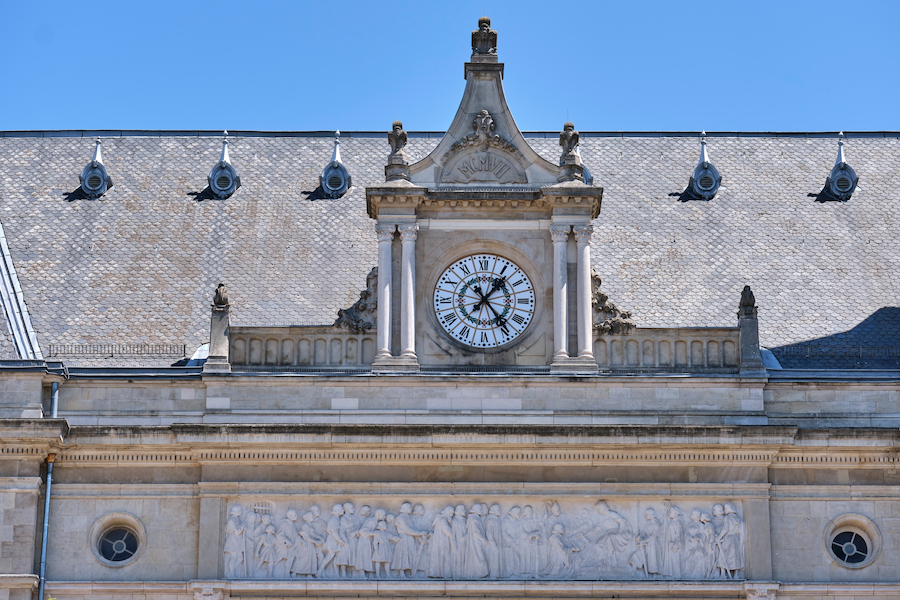
[ X-T30 ( ) ( ) ]
[ S21U(S) ] [ S21U(E) ]
[ Mi 11 Ultra ] [ Axon 30 Ultra ]
[ OnePlus 9 Pro ] [ Mi 11 ]
[ S21(E) ] [ iPhone 12 Pro ] [ Pixel 5 ]
Starting off with the longest focal length results at 10x magnification, the various devices here end up around with a focal range of around 240mm.
The two Galaxy S21 Ultras showcase similar, but also very different results. What’s evident is that the Snapdragon version of the phone is able to maintain significantly better texture detail throughout the whole scene, as if the Exynos variant had a too slow a shutter speed, being out of focus, or simply having a sort of HDR algorithm that isn’t correctly superimposing the different frames together. You could argue the Snapdragon is overprocessing detail structure too much it’s even more defined than on my X-T30 shots, but I’d argue that it would still be a preferable result.
The Mi 11 Ultra’s 10x shot is also very interesting. In terms of detail retention, it’s notable that this should be a crop out of the sensor’s native 48MP mode, as it’s much better quality than a scaled up 12MP result from a 5x magnification. In terms of spatial resolution against the S21 Ultra, it’s extremely hard to tell the two apart, which makes sense given the small theoretical difference between the S21 Ultra’s 8.21 arcseconds per pixel resolution and the Mi 11 Ultra’s 7.45 arcseconds per pixel. The Mi 11 Ultra definitely doesn’t do well in textures – I’m not sure if this is a result of the processing or a result of the lower colour resolution due to the quad-Bayer colour filter which does come into play here at the phone’s 48MP sensor capture mode. It also can be a result of the dynamic range of the pixels due to it working with 0.8µm pixels versus the S21 Ultra’s 1.22µm pixels. What’s clear though is that the overall image is too dark, with the shadows being unnaturally pronounced.
The Axon 30 Ultra was the only other periscope camera tested today, I thought the phone’s exposure and handling of HDR here on the small module was actually excellent at reproducing the scene. In terms of resolution, while it’s significantly better than other phones which only have more traditional telephoto setups, it’s still notably quite worse than the Mi 11 Ultra and S21 Ultra – which makes sense and lines up with the expected lower 17.7 arcsecond pixel resolution.

[ X-T30 ( ) ( ) ]
[ S21U(S) ] [ S21U(E) ]
[ Mi 11 Ultra ] [ Axon 30 Ultra ]
[ OnePlus 9 Pro ] [ Mi 11 ]
[ S21(E) ] [ iPhone 12 Pro ] [ Pixel 5 ]
On the next scene, the two S21 Ultras again showcase similar results, the Snapdragon, whilst quite notably having a lot more sharpening and enhancing of detail structure, still manages to capture a more pleasing shot as the Exynos’ textures appear very blurred out in comparison.
The Mi 11 Ultra does extremely well in resolution, however the exposure and HDR is quite bad, with the histogram of the picture being empty in the last 15% of intensity levels, just being underexposed or just wrongly processed.
The Axon 30 Ultra did an excellent exposure balance, though the image looks quite undersaturated.
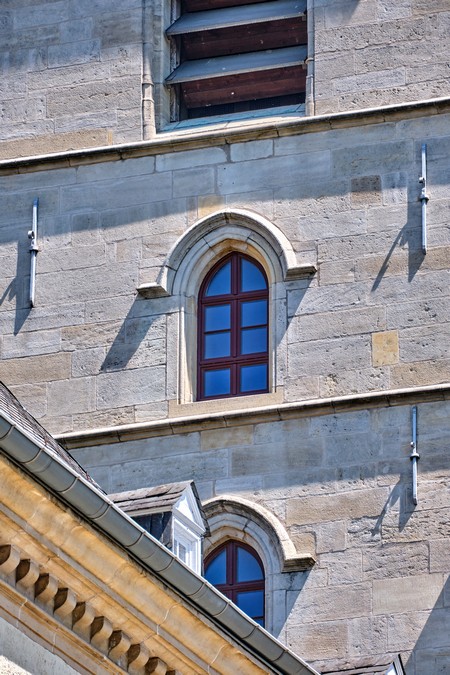
[ X-T30 ( ) ( ) ]
[ S21U(S) ] [ S21U(E) ]
[ Mi 11 Ultra ] [ Axon 30 Ultra ]
[ OnePlus 9 Pro ] [ Mi 11 ]
[ S21(E) ] [ iPhone 12 Pro ]
When looking at lower magnification levels such as 5x – around 125-130mm equivalent focal length, there’s quite a bit more shakeup in the device ranking and a lot more devices which showcase respectable results.
Leading again with the two S21 Ultras, it’s here where generally start falling apart for Samsung and their module approach. As the periscope telephoto module is a native 238mm focal length, anything below that has to fall back to using the phone’s 3x intermediary telephoto. The thing is, that module isn’t overly technically impressive, so while it does generally well, I wouldn’t say that it’s any leaps and bounds better than for example the secondary 64MP wide angle module of the regular S21 at this magnification. Between the two S21 Ultras, it’s also again the Exynos which exhibits horrible blurred out textures compared to the Snapdragon unit, so it’s not something that merely limited to the periscope telephoto module.
The Mi 11 Ultra at 5x has its periscope module running at the native focal length and the sensor at the binned 12MP mode. This combination results in the absolute sharpest and most detailed result out of all phones in this range, obliterating the S21 Ultra’s result, which makes sense given the difference in resolving power of 14.9 arcseconds for the Mi 11 Ultra and only 27.4 arcseconds for the S21U. Unfortunately, the bad news for the Xiaomi is that the exposure is again pretty awful, totally lacking any kind of highlights even though the building is in broad sunlight.
The Axon 30 Ultra does a good job and resolution here is quite good as it’s near its native focal length and pixel density. The image is a bit flat in the textures, it might be because of the small pixel sizes of the sensor and not having enough dynamic range to maintain detail in the highlights.
Among the other phones with more “traditional” telephotos, the OnePlus 9 Pro has the best intermediary resolution, however its handling of textures and overall HDR highlights is far behind the other phones, with Apple’s iPhone 12 Pro producing the most realistic and representative result among the devices.
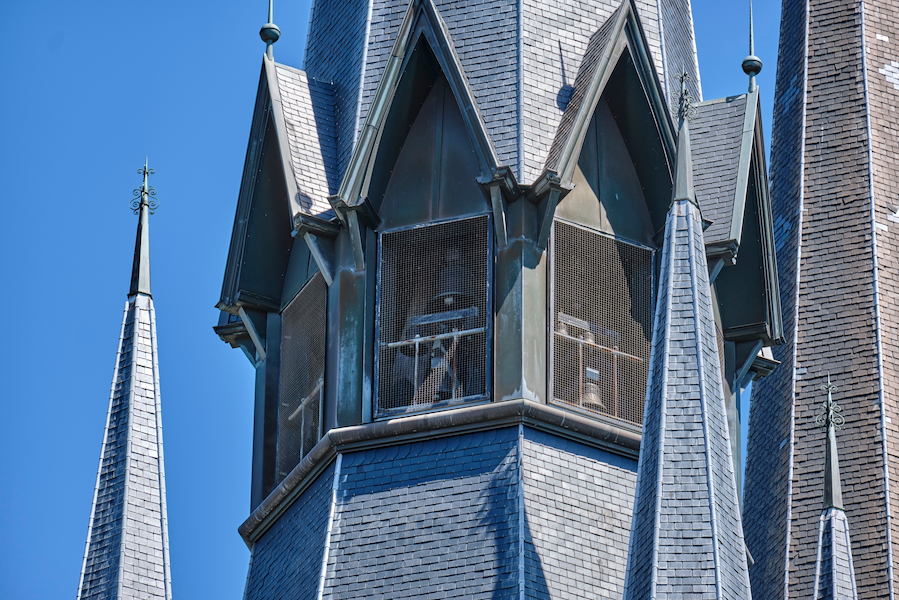
[ X-T30 ( ) ]
[ S21U(S) ] [ S21U(E) ]
[ Mi 11 Ultra ] [ Axon 30 Ultra ]
[ OnePlus 9 Pro ] [ Mi 11 ] [ S21(E) ]
Looking back again at more extreme focal lengths, this shot made me again question if the periscope telephoto on my S21 Exynos is actually optically correct or not as there’s evident blooming and blurriness.
The Mi 11 Ultra outresolves the S21 Ultra on high contrasting edges, which is the best-case scenario for the quad-Bayer sensor, but falls behind in dynamic range, likely due to the smaller pixels and less colour information.
At 5x, the Mi 11 Ultra again dominates the field, with the Axon 30 Ultra following it, and the S21 Ultra in tow to that.

[ X-T30 ( ) ( ) ]
[ S21U(S) - ]
[ S21U(E) - ]
[ Mi 11 Ultra - ]
[ Axon 30 Ultra - ]
[ OnePlus 9 Pro - ]
[ Mi 11 - ]
[ S21(E) - ]
[ iPhone 12 Pro ] [ Pixel 5 - ]
Using these extreme telephoto modules in low light is relatively a rare use-case in my experience as you’d not experience much such circumstances as reaching far subjects tends to be a matter of brighter conditions, however it’s also a scenario that I wanted to cover just for the sake of completeness. This indoors scenario is extremely challenging from a lighting perspective, showcasing both low light areas as well as extremely bright highlights requiring extreme dynamic range, which will be very hard for the telephoto modules’ smaller sensors.
At 10x, the periscope telephotos on all the phones are generally useless here, unless the high-contrast look due to lack of dynamic range is what you’re going for.
The two S21 Ultras again have the Snapdragon exhibit significantly better sharpness and less haze than the Exynos. Enabling night mode here doesn’t do all too much for the phones on the periscope module. At 3-5x which uses the mid-tier telephoto, results are adequate, and do outperform the other classical telephoto module lenses of other phones.
The Mi 11 Ultra equally is absolutely struggling with the dynamic range at 10x – reducing to 5x dramatically improves the shadows even though the highlights are a bit more overblown now, the improvement here is mostly due to the doubling of the dynamic range in the pixel binning mode, it’s by far the best performing phone here. At 10x, night mode here helps a lot with the exposure, however we’re losing a ton of detail – that’s because the exposure time is rather slow at 1/39th of a second and at this focal range it’s unpractical do to exact image stacking computational photography without the devices fixed on a tripod. Night mode doesn’t seem to affect the 5x shot, which is a bit weird – I wonder if it even activated. As a note, in this scene it seems night mode on the main sensor only works in the binned 12.5MP mode, as the 2x shot is far lower resolution than the normal 2x shot, which seems to be in the native 50MP resolution mode.
The Axon 30 Ultra also falls flat in its 5x and 10x shots due to the extreme dynamic range. Unfortunately, the phone doesn’t allow for night mode on this module at all, and at longer magnification night mode shots uses the secondary wide-angle module, which is weird given that this module has worse pixels and also lacks OIS. The results are thus naturally terrible.
Conclusion at Extreme Focal Lenghts (>120-240mm)
In general, the competitive landscape here is quite small simply because there’s really only a few phones that are really worth talking about, that’s the S21 Ultra and the Mi 11 Ultra. At >10x or >240mm, the S21 Ultra is the best phone on the market right now thanks to its technical advantages such as native optical focal length as well as its larger 1.22µm pixel sensor resulting in higher colour resolution compared to the quad-Bayer filter on the Mi 11 Ultra, and more dynamic range in bright conditions.
As much as the S21 Ultra here is great at that focal length, the phone just falls apart in practical usage simply because it doesn’t have a solution at the intermediary focal lengths such as 5x – 10x (120-240mm). The Mi 11 Ultra obliterates the S21 Ultra here virtue of its optics and sensor combination. It’s actually pretty ironic of Samsung, as the Mi 11 Ultra’s periscope module is essentially almost identical to that of the S20 Ultra, going as far as both those two devices featuring the same IMX586 sensor on the periscope module, with similar focal range, and just slightly different optics. In effect, the predecessor S20 Ultra has a much better hardware solution than the S21 Ultra, providing more flexibility and higher quality experiences in a comparatively smaller and less complex hardware package, which for me is just a sign of the marketing department winning over common sense at Samsung.
The Axon 30 Ultra is the only other device in today’s line-up worthy of mentioning at these focal lengths: while it does have a native 123mm equivalent optics system corresponding to a 5x native magnification level, its 8MP sensor limits it in terms of resolving power. While it does showcase better results than other phones here without the more exotic optics systems, it’s quite behind the Mi 11 Ultra or S21 Ultra at >10x, though again I have to mention that the Axon outperforms the S21U at >5x.
Daylight: Intermediate Focal Lengths, Ultra-Wide
Beyond the periscope telephoto phones, at intermediate focal lengths and ultra-wide solutions, there’s a lot more varied hardware solutions amongst all of the devices today. It’s actually a complex topic that we generally never looked at more empirically in terms of what the theoretical camera hardware should actually be capable of, so first I wanted to revisit the metrics of the theoretical spatial resolution of the various camera modules optics and sensor combinations.
Spatial resolution here is determined in arcseconds per pixel: an arcsecond is 1/3600th of a degree in a field of view, so essentially, we’re just determining the amount of the FoV that one pixel takes up. The lower the angle per pixel, the more detailed the resulting picture is in terms of spatial resolution representation of the subject is. Of course, this is dependent on the camera module’s optical frame – i.e. the focal length and the resulting FoV, as well as the sensor’s resolution in terms of pixels.
Because phone cameras don’t actually have true zooming optics – meaning actually moving analog moving optics elements that increase or decrease the focal length, essentially making them prime lenses, it means that the devices only have a certain set of discrete native spatial resolution steps.
What’s interesting about this chart is not only the revealing of the various camera modules’ native spatial resolution, but also the inclusion of the many quad-Bayer camera sensors which essentially have two working resolutions, either the full native small pixel resolution, or the 4:1 or 9:1 (in case of Samsung’s nona-Bayer) pixel binned modes.
Starting off with the Mi 11 Ultra for example, although the camera only has three physical camera modules, the phone actually has six different spatial resolution steps if you actually count the binning and native modes of the various sensors. It’s to be noted, that there’s also native resolution modes that actually don’t make practical sensor in the every-day photography modes of the cameras – for example on the Mi 11 Ultra it’s pointless to use the ultra-wide angle’s 48MP native resolution mode when magnifying in the camera app as the phone will switch over to the main camera module with a superior optical focal length anyhow. The same applies to the OnePlus 9 Pro UWA, and the Axon 30 Ultra also actually doesn’t use its native 64MP sensor capture modes on the UWA or main camera in the normal magnification levels of the camera app, though it uses the secondary wide angle in this mode. Of course, these modes are still available to use when you actually enable the high-res capture modes of the various devices, but I want to focus on the “normal” camera experience in the regular resolution capture mode of the devices first and foremost.
On the S21 Ultra, the 108MP sensor is a bit special because of its 9:1 pixel bin mode, having spatial resolution steps at 64.1 arcseconds per pixel in the default 12MP mode, or 21.4 arcseconds per pixel in the 108MP mode. This latter resolution is also actually never used in the camera’s default operation mode, which like the other phone’s is why it’s marked out in the chart.
Other devices which are notable to mention is the S21’s 64MP secondary wide-angle module which exhibits extremely good spatial resolution even though even though the optical system isn’t technically a telephoto at all, more on this in a bit.
The OnePlus 9 Pro is also curious as the small 8MP telephoto module’s spatial resolution is really only marginally higher than the native capture mode of the main camera.
Devices like the iPhone 12 Pro and Pixel 5 are simple in terms of the hardware here as they’re normal Bayer sensors with 3 or 2-module camera systems.
Ignoring the hardware steps which aren’t being used by the default camera applications, we end up with a chart of the various phones’ “native” camera modules at their resulting effective focal lengths. Native in the sense that at the given focal length, the camera systems are actually able to produce results at the default 12MP capture modes instead of upscaling or cropping the images.
Starting off with the Mi 11 Ultra again as an example – even though the phone only has 3 physical modules, it behaves as if it would have 5 camera modules, because it has 5 different full 12MP quality capture steps. Similarly, the Mi 11 and the OnePlus 9 Pro also take advantage of their main camera sensor’s native resolutions to have a “virtual” mid-telephoto module at 47-49mm which still produces full quality 12MP images (Full quality at least in terms of luminance information, colour information is still limited).
The Galaxy S21 (and S20) are special in this chart – so in general, I depict the gradients starting from their full native resolution and gradually degrading until up to 2x digital magnification. The S21 doesn’t behave like this: in the Samsung camera app, the phone will use the main camera up to 52mm equivalent magnification (2x zoom) where it then switches to the secondary 64MP wide angle. I’m not sure why they do this, they could in theory switch over a bit earlier as the actual module has a 27.6mm optical focal length, maybe they still want to take advantage of the dynamic range of the main sensor’s much larger pixels up to that point. The thing is, at 52mm equivalent focal length magnification, the 12MP default capture mode is still well below the actual spatial resolution capability of the 64MP module, so you can still magnify more in a lossless fashion up until 62.4mm before the camera app switches from downscaling to 12MP to upscaling to 12MP resulting captures.
The Axon 30 Ultra is interesting because of the three quad-Bayer sensors. The ultra-wide and main cameras don’t use their native resolutions in the default capture modes, however the secondary 31mm wide angle will go to 64MP mode in some lighting conditions and at >2.4x magnification, giving you a sort of a 60mm camera, but I found this to be quite inconsistent to wary a lot based on the scene.
The previous chart was on a logarithmic scale for better depictions of the individual steps, but plotting it to an actual linear scale to the focal length showcases the “quality gaps” more evidently. Again, assuming digital upscaling up to 2x is still acceptable, we see various devices not having solutions at some focal lengths beyond that. The Mi 11 Ultra at around 80mm or 4x magnification great, and the S21 Ultra suffers large gaps between 2x-2.9x and 4x-9.9x. Both these phones actually attempt to do image fusion between the different sensors, overlapping parts of the longer focal length module images onto the wider-angle module. This technique is rather prone to weird looking artefacts and extremely inconsistent, especially on the S21 Ultra, or just doesn’t work at all.

[ X-T30 ( ) ( ) ]
[ S21U(S) ] [ S21U(E) ]
[ Mi 11 Ultra ] [ Axon 30 Ultra ]
[ OnePlus 9 Pro ] [ Mi 11 ]
[ S21(E) ] [ iPhone 12 Pro ] [ Pixel 5 ]
We’re following up on some of the scenes from the previous page, this time around focusing on the shorter focal ranges.
On the S21 Ultras, it’s again the Snapdragon which showcases the better image on the ultra-wide as it’s able to maintain more natural detail retention, whereas the Exynos seems to have a detrimental sharpening filter going on. The Exynos S21 also looks near identical, though remember this is a different sensor, although it has the same specifications.
Both Xiaomi phones have a very natural preservation of details with what appears to be no postprocessing of structure or sharpening, which gives the Mi 11 Ultra the most “big sensor” look out of all the phones. What’s not great about it is the outer regions of the frame which suffer from considerable optical aberrations and blurriness.
The OnePlus 9 Pro’s appear to be the most performant, even though it’s not quite as a wide field of view as some of the other devices. There’s a lot of structure processing and sharpening going on here and it gives a very artificial look though. The exposure is lacking in the highlights as it’s one of the most muted results of any device here, which can also be seen in the histogram of the picture.
The Axon 30 Ultra has a great ultra-wide with very good quality details all whilst remaining very natural. The iPhone 12 Pro’s performance looks relatively dated compared to the other phones – exposure is nice but detail preservation is amongst the worst. The Pixel 5 has amongst one of the sharpest ultra-wides which corresponds to the actual spatial resolution mentioned earlier, but that’s partly also because the field of view is narrower for this 16MP sensor.
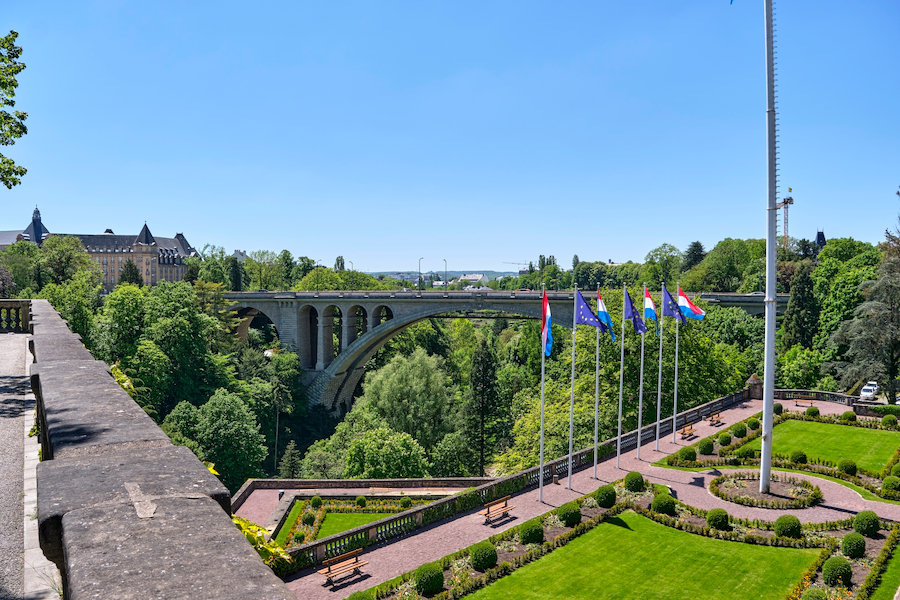
[ X-T30 ( ) ( ) ]
[ S21U(S) ] [ S21U(E) ]
[ Mi 11 Ultra ] [ Axon 30 Ultra ]
[ OnePlus 9 Pro ] [ Mi 11 ]
[ S21(E) ] [ iPhone 12 Pro ] [ Pixel 5 ]
The next scene is similar in characteristics on the ultra-wides – the Snapdragon S21 Ultra is much better than either Exynos phones through superior detail retention. The other phones also are largely the same in terms of their strengths and weaknesses.
One thing of note is the iPhone 12 Pro picture which is far more natural looking in terms of colours and matching the Fuji reference – it’s the only phone that actually captures in wide colour gamut and thus is able to well represent the sunlit colours of the scene.
Looking at around the 50mm focal length or 2x magnification level, things are a bit interesting and where our prior discussion about sensor spatial resolution comes into play:
In regards to detail, the regular Galaxy S21 is by far the strongest amongst all the devices here. Following closely is the iPhone 12 Pro which has by far the best colours and exposure balance. The Mi 11 Ultra is quite good with the details; however, the exposure appears extremely dark and lacks a lot of dynamic range, a similar thing can be said of the Axon 30 Ultra. The OnePlus 9 Pro’s result, unlike the previous scene, feels like an upscaling of the binned 12MP shot, and has in general flattened and clipped highlights. The Pixel 5 has to digitally zoom in, and the same applies to both S21 Ultras whose 2x shots look no different than a digital crop out of the 1x images.

[ X-T30 ( ) ( ) ]
[ S21U(S) ] [ S21U(E) ]
[ Mi 11 Ultra ] [ Axon 30 Ultra ]
[ OnePlus 9 Pro ] [ Mi 11 ]
[ S21(E) ] [ iPhone 12 Pro ]
On this next very contrast-rich and high dynamic range shot, both S21 Ultras are doing well even though their metering was a bit different, the Snapdragon prioritised maintaining highlight detail whereas the Exynos has better shadows details, with similar results on the S21.
The Mi 11 Ultra has a very natural look in details, but I found the HDR to be too weak in regards to the shadows. The Mi 11 is similar in that the HDR isn’t very strong in returning textures both in highlights or shadows.
The OnePlus 9 Pro has good detail retention for the highlights but goes a tad too far compared to what it should be doing, resulting in bad shadows, that roof of the bell tower is literally reflecting the sun and not even my Fuji could maintain highlights there, yet the OP9Pro isn’t even clipping to full white here.
The iPhone 12 Pro has impeccable tone curves and HDR, and it’s surprising how well it does given the smaller sensor.
The Axon 30 Ultra did a fantastic job and actually is the device with the by far best HDR result in this scene, maintaining good highlights and shadow details simultaneously, all while having good textures without any over-sharpening. Just the colour temperature was off as being too warm.
At 50mm/2x the pecking order is the S21 leading by considerable amounts again, followed by the Mi 11 Ultra, iPhone 12 Pro, OnePlus 9 Pro, Axon 30 Ultra, Mi 11, and finally the S21 Ultras as last. The one change here from the previous scene is that the OP9Pro here used its native resolution instead of binning. Unfortunately I forgot to take samples with the Pixel 5 here.

[ X-T30 ( ) ]
[ S21U(S) ] [ S21U(E) ]
[ Mi 11 Ultra ] [ Axon 30 Ultra ]
[ OnePlus 9 Pro ] [ Mi 11 ]
[ S21(E) ] [ iPhone 12 Pro ] [ Pixel 5 ]
This is another difficult scene, with extremely bright highlights, but most of the scene dominate by shadows.
The Samsung phones are again all over the place, the Snapdragon S21 Ultra just vastly superior in HDR and natural detail retention compared to the Exynos. The Exynos S21 Ultra is also beat by the smaller S21 both at 1x and 2x,
Almost all phones had trouble with exposure and HDR, the Pixel 5 had by far the best result and natural looking representation, followed by the Xiaomi phones, with the Mi 11 Ultra having great details. The iPhone’s exposure it taken way too far and also misses badly on colour temperature.
The OnePlus 9 Pro is plagued by the company’s utterly unrealistic handling of blacks and dark shadows, rendering the tree trunk barks clipped completely to black, which looks absurd to me. More on this in the next page.

[ X-T30 ( ) ]
[ S21U(S) ] [ S21U(E) ]
[ Mi 11 Ultra ] [ Axon 30 Ultra ]
[ OnePlus 9 Pro ] [ Mi 11 ]
[ S21(E) ] [ iPhone 12 Pro ] [ Pixel 5 ]
Zooming in to around 80mm/3x there’s actually some surprising results. The one device that leads the pack here appears to be the Mi 11 Ultra, and works very well in this scene as the eye-catching subject matters are mostly in the centre. The outer frame is an upscaled 50MP native mode image from the main sensor, while the middle of the frame is fused from the 5x telephoto module. The fusion here works quite well and isn’t noticeable at first glance, but for example you see the detail difference in the roof tiles and foreground lanterns.
The S21 Ultra here finally is able to use its 3x telephoto module and gives out excellent results, also finally beating the regular S21 thanks to the bigger pixel advantage.
The OnePlus 9 Pro’s 3.3x telephoto does well in resolution but in general the colours are extremely off or undersaturated. The iPhone 12 Pro does well with exposure and colours, but has to crop in, losing details – the same can be said of the Pixel 5 which is just not competitive here, not having any telephoto at all.
The Axon 30 Ultra is using the native 64MP mode of the secondary wide angle – the hardware, detail is ok but dynamic range and textures are suffering a lot given the 0.7µm pixels of this sensor.
Conclusion at Intermediate Focal Lengths, Ultra-Wide
The overcall conclusion in terms of intermediate focal length camera solutions seems to pretty much match the expectations we presented at the beginning of the page, with the results mostly in line with the theory of what the various hardware solutions are capable of.
At ultra-wide imaging, it’s generally less about the sensors and more about the optics quality and the image processing. All the phones have their strengths and weaknesses here – the S21 series are generally well-rounded, though the Exynos variants have inferior processing compared to the Snapdragon. The iPhone 12 Pro does absurdly well given its sensor size. Technically, the Mi 11 Ultra should be at the top, but is hampered by bad optics and not too great HDR. The OnePlus 9 Pro has great optics on the other hand, but its processing is showcasing a lot of over-sharpening and bad handling of metering and exposures.
Personally, I still think Samsung’s Galaxy S21 to be the most streamlined and best performer here thanks to its secondary 64MP wide angle module, giving out exceptional quality 52mm/2x magnification results. The native modules such as the iPhone 12 Pro follow that, with the quad-Bayer main camera sensors which use their native resolution at >2x in tow – the Mi 11 Ultra being the best, the OnePlus 9 Pro slightly behind it. The Axon 30 Ultra camera solution is interesting, but doesn’t really outmatch the S21 at these focal lengths. The S21 Ultra just fails badly here, and is amongst the worst performers, having no solution for this focal length.
Beyond 80mm/3x, the S21 Ultra finally gets some bonus points as being the generally best performers here. The Mi 11 Ultra follows closely when given the chance to take advantage of its image fusion, and when it actually works. The S21 is still very good here. The OnePlus 9 Pro telephoto module is relatively low quality due to its minuscule sensor, so it’s better than nothing, it’s not a great performer. Finally, the Axon 30 Ultra is hit-and-miss depending on the scene, sometimes it produces usable results a bit below that of the quality of the S21, but sometimes it bins to 12MP on the sensor and naturally then just doesn’t compete.
Daylight: Main Camera HDR
We talked a lot about the optics and the different auxiliary sensors on the various phones, but kept the comments limited in regards to the main sensor as well as the general image processing characteristics of the various phones, so let’s go dive in a little more depth in that regard. In general, most of the phones’ main camera sensors should be quite competent nowadays as it’s the one module that usually doesn’t get to suffer from design compromises. Nevertheless, there are clearly some phones which offer quite superior hardware, such as the Mi 11 Ultra’s relatively giant 1/1.12” sensor – with the compromise here coming in the device’s huge camera bump instead.
Image processing is also extremely important even on such large sensors; while some phones have larger pixels, it’s still nowhere near large enough for the sensors to have a sufficient pixel full well capacity to enable the natural dynamic range information extraction in well lit scenarios while still maintaining detailed highlights as well as shadows. Most sensors still only have 10-bit ADCs and we’re only now seeing some newer 12-bit models, while almost all dedicated cameras out there 14-bit is the standard and new sensor generations in the coming years now feature 16-bit depth. The solution to this is to use multi-frame HDR processing, where the phone cameras will capture multiple successive images and merge them together to get to a higher dynamic range image. This year, we’ve seen the introduction of staggered HDR sensors which help out enabling this feature in a faster manner with less movement ghosting, the HM3 sensor on the S21 Ultra or the GN2 on the Mi 11 Ultra feature this new advancement.
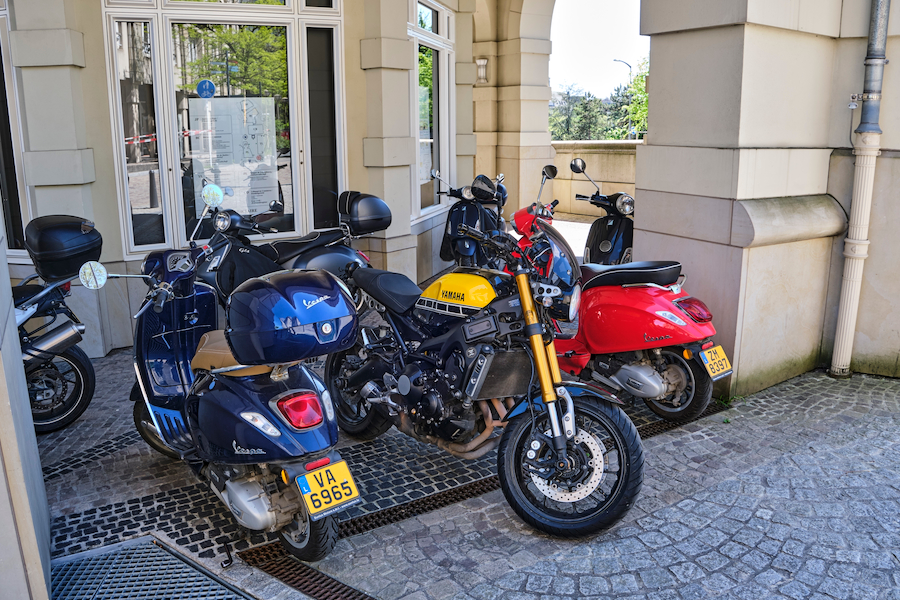
[ X-T30 ( ) ]
[ S21U(S) ] [ S21U(E) ] [ Mi 11 Ultra ] [ Axon 30 Ultra ]
[ OnePlus 9 Pro ] [ Mi 11 ] [ S21(E) ] [ iPhone 12 Pro ] [ Pixel 5 ]
Starting off with this bike scene, it’s pretty obvious what the intended subject is meant to be, however the metering of most smartphones will still want to balance out the extremely bright highlight in the background sky, which in turn means the HDR processing will have a harder time in trying to recover shadows in the foreground even though it’s not a dark scene at all, which is in general why the look on the phones is quite different than what I captured on the X-T30 – the colour temperature was also quite off on all the phones.
The S21 Ultras pictures is a good example of the metering, the Exynos preferred to go brighter with the HDR and retain a bit more detail in the background highlight, while the Snapdragon preferred to go for more detailed shadows on the main subject. In terms of details, it seems this scene went the opposite of what we saw until now, and it’s the Snapdragon which employs a visible structure enhancement throughout the scene, giving it a bit more of an artificial look. The regular S21 doesn’t look very different to the S21 Ultra at all – if anything I prefer the S21’s slightly better colours, and I do see some improved shadow detail.
The Mi 11 Ultra excels in dynamic range here, showcasing much better shadows whilst also having more highlights maintained in the background compared to the S21 Ultra. The detail structure is also more natural without any heavy processing. The regular Mi 11 on the other hand looks completely washed out in comparison, with very little detail retention, as if the phone was primarily capturing using the ultra-wide and sensor fusing some details from the wide-angle – I’m a bit perplexed by the result.
While the OnePlus 9 Pro image appears eye-catching, it’s not a technically great result as the shadows are forced towards black. I actually remember when OnePlus introduced this image processing with a firmware update on the OnePlus 7 Pro following the devices’ releases, based on user feedback, with the company trying to mimic the “contrasty” Pixel look. That Pixel look was actually a negative side-effect of the HDR processing incapable of dealing with shadows, which was fixed and resolved with the latest HDR+ algorithm on the Pixel 5. OnePlus devices today are still left with what I consider a self-induced handicap.
The Axon 30 Ultra is a bit flat in the foreground highlights, producing a generally dark picture. The iPhone is also having surprising trouble with the metering here, as the Pixel 5 does quite a bit better.
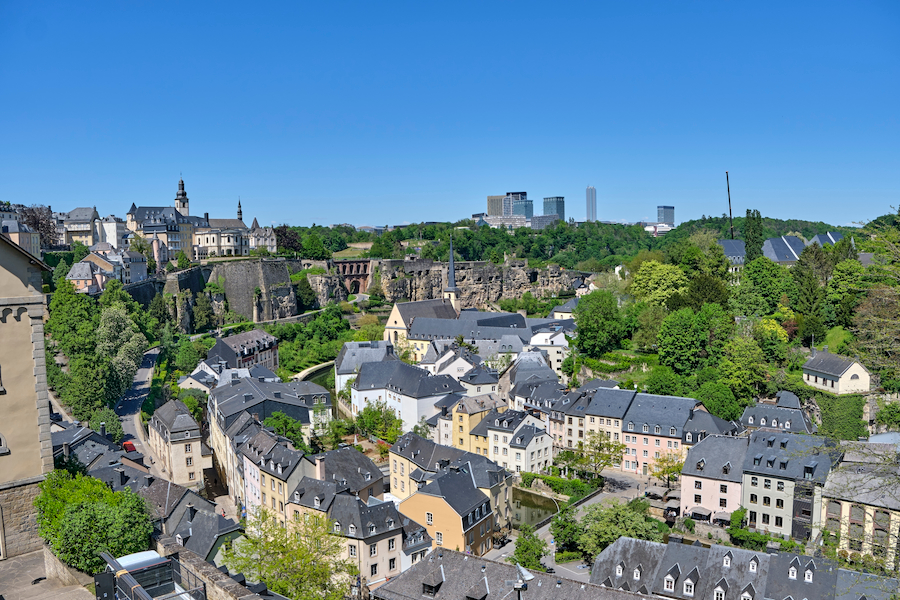
[ X-T30 ( ) ]
[ S21U(S) ] [ S21U(E) ] [ Mi 11 Ultra ]
[ Axon 30 Ultra ] [ OnePlus 9 Pro ] [ Mi 11 ]
[ S21(E) ] [ iPhone 12 Pro ] [ Pixel 5 ]
In this landscape, the Mi 11 Ultra and the Pixel 5 did best in terms of colours. The S21’s did well in the overall representative brightness of the scene, however I feel like they didn’t have the dynamic range in the highlights to give out natural graduations, and thus it feels a bit flat. The Axon 30 Ultra feels it like has over-sharpening going on, and also while the overall brightness is correct it struggles to graduate the highlights correctly.
The over-processing on the OnePlus 9 Pro is quite horrible and makes a huge mess of the colour tones as well as details of the scene.
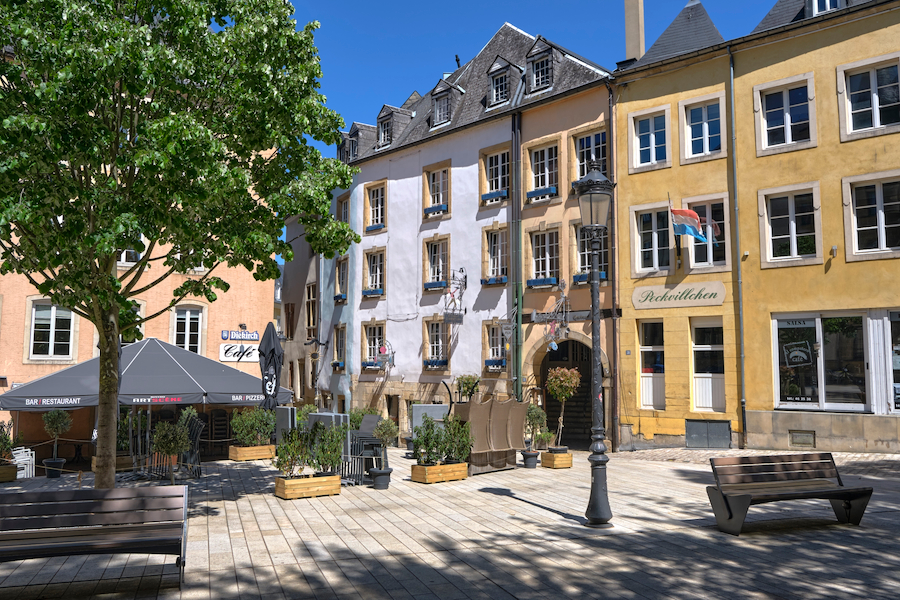
[ X-T30 ( ) ]
[ S21U(S) ] [ S21U(E) ][ Mi 11 Ultra ]
[ Axon 30 Ultra ] [ OnePlus 9 Pro ] [ Mi 11 ]
[ S21(E) ] [ iPhone 12 Pro ] [ Pixel 5 ]
In general colour tones and balance, the Pixel 5 has I think the best results, closest to being accurate, generally followed by the iPhone 12 Pro. The iPhone is generally the only one being able properly pick up the highlight textures, while the Pixel 5 is the only one being able to pick up extreme shadow detail.
The S21’s again had very good overall scene exposure, however lack detail retention in the highlights, probably going too far beyond what the sensors were capable. The Xiaomi phones are both generally good but their HDR processing really isn’t as strong in recovering information here. The Axon 30 Ultra does well except for what I would consider a bit too warm colour. The OnePlus 9 Pro struggles with highlight textures, and again has this extreme digital look due to structure enhancing.
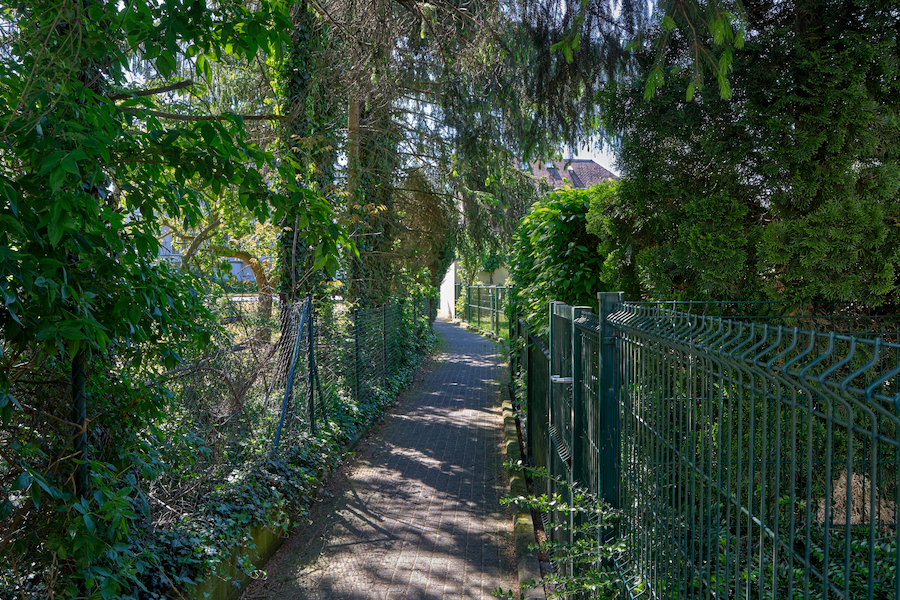
[ X-T30 ( ) ]
[ S21U(S) ] [ S21U(E) ] [ Mi 11 Ultra ]
[ Axon 30 Ultra ] [ OnePlus 9 Pro ] [ Mi 11 ]
[ S21(E) ] [ iPhone 12 Pro ] [ Pixel 5 ]
This was also more an artificial scene to see what the HDR algorithms would do on the various phones. The Pixel 5 is again generally the best in terms of correctly maintaining colours in the extremes. The usual problem is that when you have highlights nearing dynamic range saturation and clipping, they should be desaturating their colours towards white, which some phones camera algorithms just don’t do as they attempt to recover details. This ends up in a very unnatural looking images where colours can go haywire.
Overall Main Camera HDR Processing & Natural Dynamic Range
In general, when it comes to the algorithms that are able to behave the best in terms of demanding high dynamic range scenarios, Google’s Pixel 5 and Apple’s iPhone 12 Pro appear to behave the best in terms of handling the tone curves correctly. The Samsung phones also have good HDR but sometimes don’t handle their highlights as well, going beyond what their sensors are capable of handling.
Xiaomi’s HDR processing doesn’t appear to be the strongest in recovering dynamic range, however the giant Mi 11 Ultra sensor still does well in terms of raw natural dynamic range, and also natural detail retention. OnePlus’s 9 Pro I found to be lacking in colour accuracy of highlights a lot, but most importantly I found the excessive sharpening and structure enhancement to be very detrimental to the images. The Axon 30 Ultra had quite good HDR in terms of returning the dynamic range, but also lots of times struggled with getting the colours tone mapped correctly.
I’d be curious to see what Google and Apple would be capable of given an actually technically competent image sensor, as most of the other vendors are really hit & miss in regards to their image processing in demanding lighting conditions.
Low-light: Large Sensors & Computational Night Modes
Low-light photography is dominated by two-prone approaches of having large sensors with large pixel sizes, as well as having the computational photography night mode image processing algorithms to do image stacking and try to extract more information that way. Night mode capture is generally a must on any smartphone device today and requires R&D on the part of the vendor’s software teams to be able to achieve good competitive results.
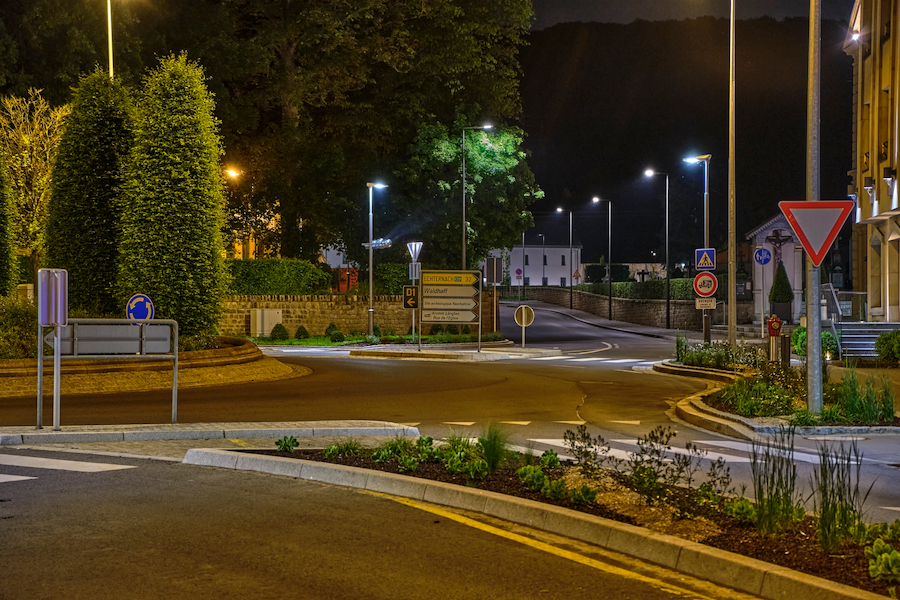
[ X-T30 ( ) ]
[ S21U(S) - ]
[ S21U(E) ]
[ Mi 11 Ultra - ]
[ Axon 30 Ultra - ]
[ OnePlus 9 Pro - ] [ Mi 11 - ]
[ S21(E) - ]
[ iPhone 12 Pro ] [ Pixel 5 - ]
As a start, I wanted to cover the most unconventional usage of night mode, and that’s on the longer focal ranges of the cameras. Generally, using the telephoto in lower light conditions isn’t exactly a very common scenario in my view, however it’s still interesting to showcase the results. For all phones I captured both the default auto mode images as well as the explicit night mode shots, when applicable.
On the S21 Ultras, at 10x on the periscope lens, the usage of night mode is actually detrimental to the image results as it seems that the exposure time becomes far too long and the phone can’t manage a sharp image result when hand-held. The Mi 11 Ultra seems to be doing a little better here in terms of the image stacking, but also loses out fine detail compared to the normal single shot exposure.
The Axon 30 Ultra doesn’t even allow night mode on its periscope module so it’s simply just a up-scaled result from the secondary wide angle. I didn’t quite understand why they’re using this module when the primary wide angle has a much better sensor as well as OIS, but now in hindsight after actually having captured the shots I realised that you can crop in closer in night mode just using that module, which wasn’t exactly clear to me at the time, so the phone should do much better than what’s showcased here.
At around 3x, the S21 phones generally do the best. The S21 Ultra uses its telephoto module with night mode, and surprisingly the regular S21’s image is also again extremely good via the 64MP sensor, when combined with night mode.
The iPhone 12 Pro deemed it too bright for night mode, so it’s a mere auto mode shot, and the OnePlus 9 Pro didn’t allow any zooming in at all when in nightscape mode, with its 3.3 telephoto not being able to compete with the S21’s.
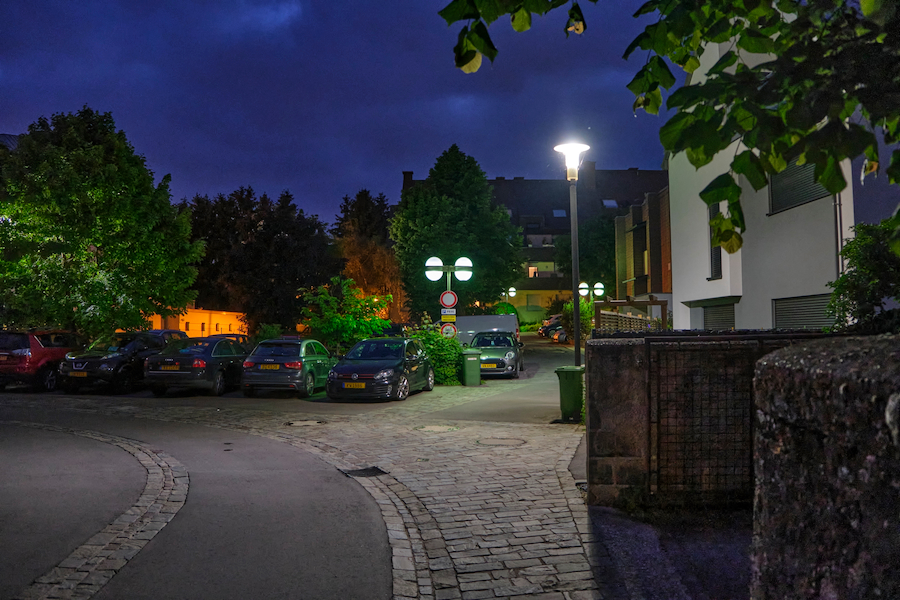
[ X-T30 ( ) ]
[ S21U(S) - ] [ S21U(E) - ]
[ Mi 11 Ultra - ] [ Axon 30 Ultra - ]
[ OnePlus 9 Pro - ] [ Mi 11 - ]
[ S21(E) - ]
[ iPhone 12 Pro ] [ Pixel 5 - ]
On the main camera, the best performer was the Mi 11 Ultra, somewhat unsurprisingly. The S21 Ultras follow it, along with the S21, OnePlus 9 Pro. The Mi 11 has a good night mode processing, however suffers from the smaller pixels in its 27MP capture mode. The Pixel 5 similarly is limited by the sensor. The iPhone 12 Pro has Apple’s algorithm tendency of being able to brighten up mid-tones, but not doing well in dark shadows or blacks, which remain nearly clipped. The Axon 30 Ultra produces a brighter image but is completely flat.
At 2x magnification most phones refuse to use their native sensor resolution so it’s just a direct upscale from the 1x results. The iPhone 12 Pro similar refuses to use its telephoto module, rather cropping in on the main sensor.
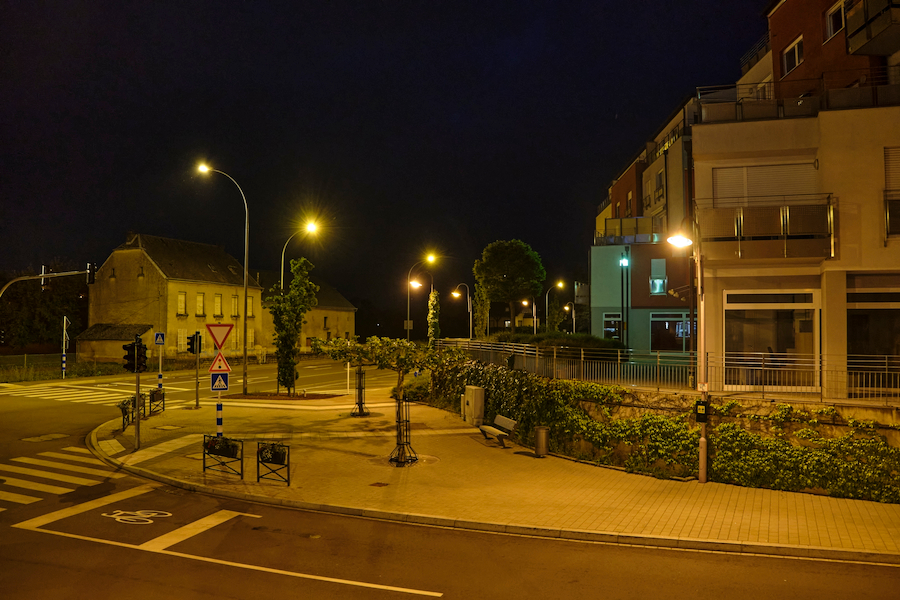
[ X-T30 ( ) ]
[ S21U(S) - ] [ S21U(E) - ]
[ Mi 11 Ultra - ] [ Axon 30 Ultra - ]
[ OnePlus 9 Pro - ] [ Mi 11 - ]
[ S21(E) ] [ iPhone 12 Pro ] [ Pixel 5 - ]
In slightly brighter scenes, the iPhone does use its telephoto. On other devices which don’t have a dedicated module, the results are generally bad. The Mi 11 Ultra either has a native resolution 2x image with very low dynamic range and contrast, or a night mode crop from its binned 1x mode which doesn’t have the resolution.
On the ultra-wide, the Samsung phones are leading in detail and colour accuracy. The Mi 11 Ultra and the OnePlus 9 Pro do also very well in details, but colour balanced the image wrong, the whole scene was indeed very orange due to the sodium vapour lamps.
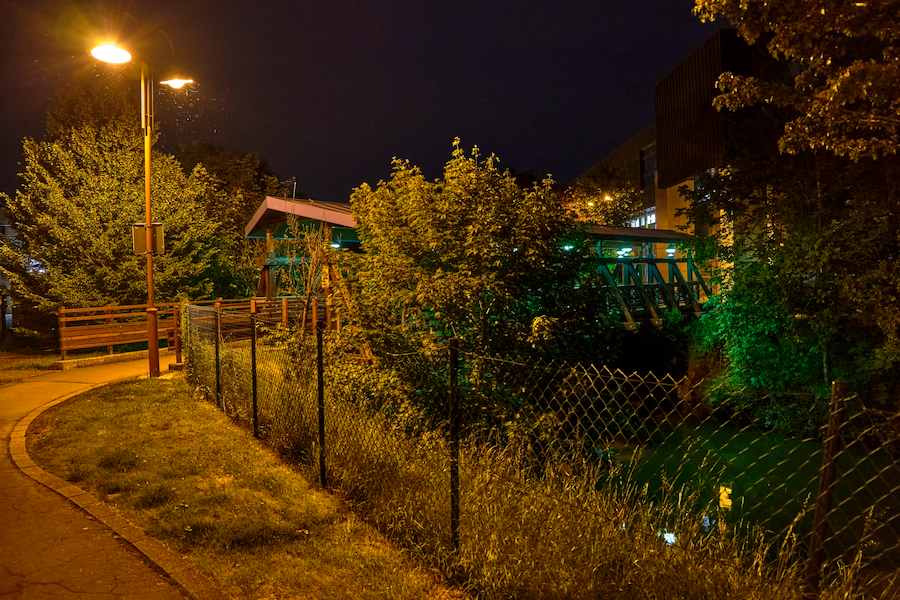
[ X-T30 ( ) ]
[ S21U(S) - ] [ S21U(E) - ]
[ Mi 11 Ultra - ] [ Axon 30 Ultra - ]
[ OnePlus 9 Pro - ] [ Mi 11 - ]
[ S21(E) - ] [ iPhone 12 Pro ] [ Pixel 5 - ]
On the main camera again it’s mostly the Mi 11 Ultra which does best. Here I would also mention that it’s one of the phones which actually even though you’re in auto-mode in the camera, the device will detect the low-light scenario and still capture a night mode shot, which is why both 1x pictures look the same.
The Samsung phones brighten the scene too much but manage to handle gradations and details well. The iPhone and Pixel follow, though the latter almost always gets colour temperature wrong in night mode. OnePlus also does mostly well but does have some flatter textures. The Axon is again bright, but also completely flat.
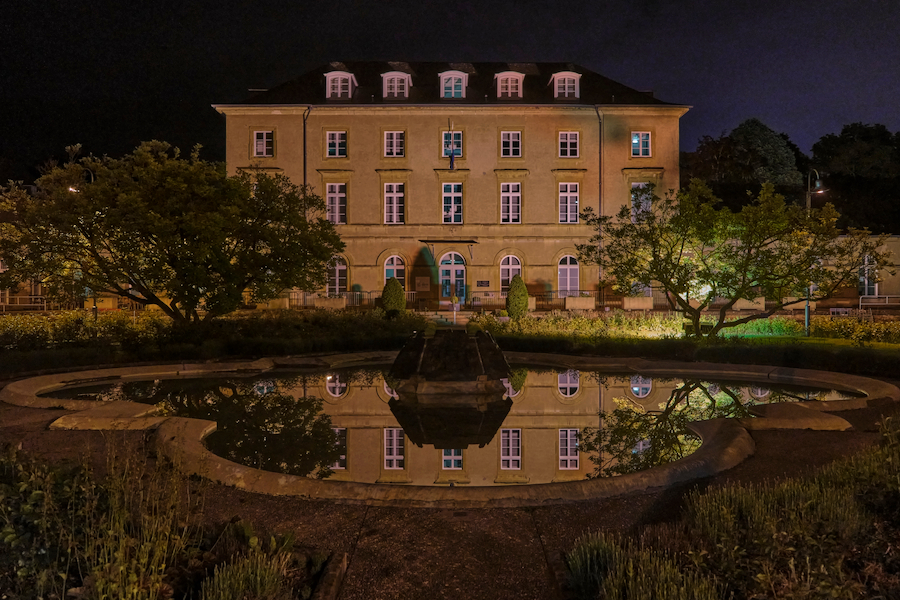
[ X-T30 ( ) ]
[ S21U(S) - ] [ S21U(E) - ]
[ Mi 11 Ultra - ] [ Axon 30 Ultra - ]
[ OnePlus 9 Pro - ] [ Mi 11 - ]
[ S21(E) - ] [ iPhone 12 Pro ]
As scenes become darker, some sensors start to not be usable anymore, even with night mode. The ultra-wide on the Mi 11 Ultra here struggles. The Axon 30 Ultra, Mi 11 and OnePlus 9 Pro’s night modes are starting to bring out sensor noise out, resulting in purple frame edges. The Samsung ultra-wides still hold up quite well.
On the main camera, the OP9Pro seems to have done the best, capturing more shadows and better details than the other devices. This is followed by the S21’s and the Mi 11 Ultra.
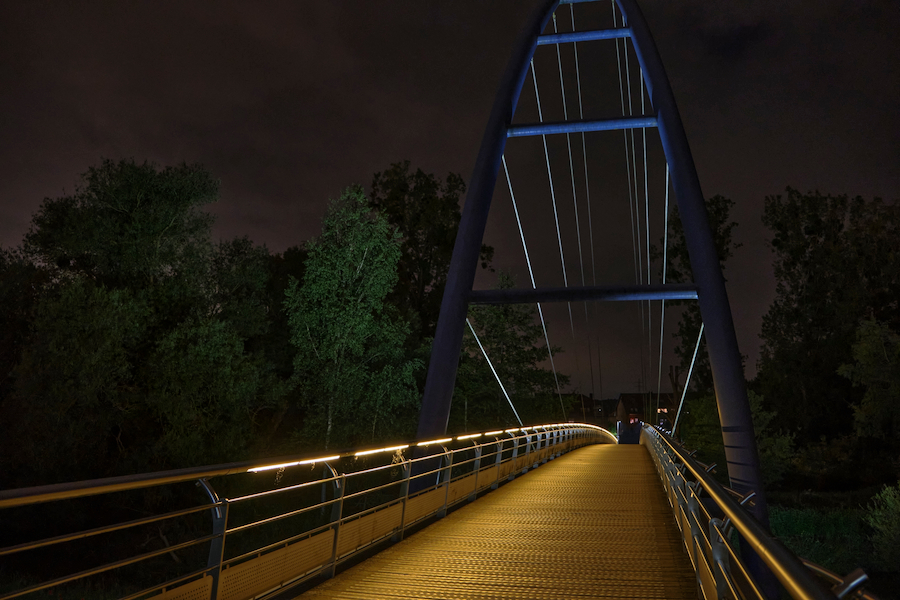
[ X-T30 ( ) ]
[ S21U(S) - ] [ S21U(E) - ]
[ Mi 11 Ultra - ] [ Axon 30 Ultra - ]
[ OnePlus 9 Pro - ] [ Mi 11 - ]
[ S21(E) - ] [ iPhone 12 Pro ] [ Pixel 5 - ]
This scene also generally follows the hardware ranking between the phones. The Mi 11 Ultra and the S21 Ultras do the best, along with the OnePlus 9 Pro. The S21 is starting to have notably more noise than the S21 Ultras here as it has smaller effective pixels. The iPhone and Pixel have good night modes but are laggards in the hardware department in terms of their sensors. The Axon 30 Ultra is again extremely flat.
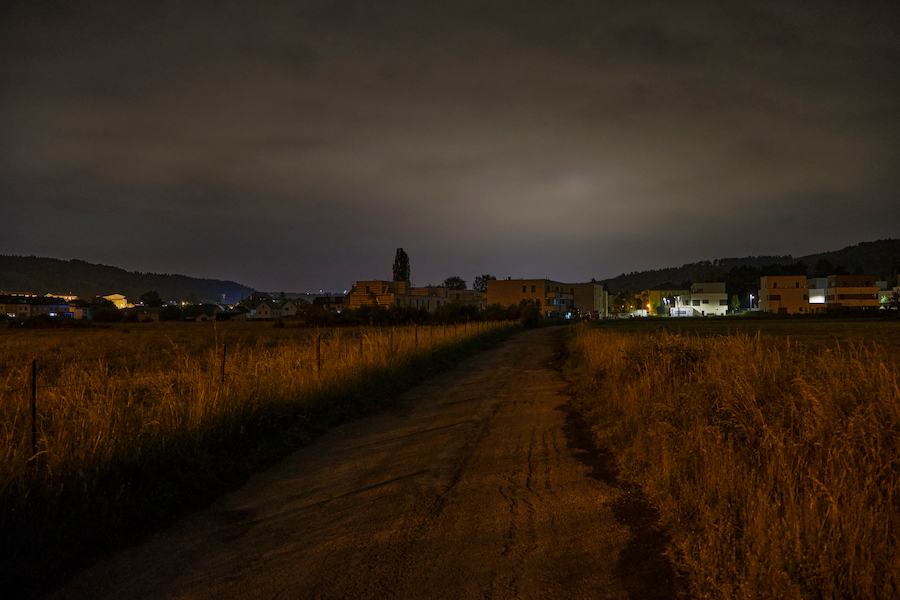
[ X-T30 ( ) ]
[ S21U(S) - ] [ Mi 11 Ultra - ] [ Axon 30 Ultra - ] [ OnePlus 9 Pro - ]
[ Mi 11 - ] [ S21(E) - ] [ iPhone 12 Pro ] [ Pixel 5 - ]
This scene was extremely dark and generally just lit by far away street lights and just the light pollution in the cloudy sky. It’s not a very realistic scenario, but just a general showcase of the extremes of what the sensors and night modes can do.
The Mi 11 Ultra is the best performer alongside the OnePlus 9 Pro, one has the hardware advantage while the other seems to have a good night mode that extracts details in extreme low light. The S21 beats the S21 Ultra in getting any light in, even though it’s extremely noisy. The Pixel has a stronger night mode in the shadows than Apple, but both suffer from getting any light. The Axon 30 Ultra has a bright image but generally only useable as a thumbnail as it’s a blurry mess.
Overall Low-Light Conclusion
In general, the low-light results largely tracked with what we expected from the phones. The top performers are naturally those devices which have a hardware sensor advantage, with big sensors and larger effective pixels. This includes the Mi 11 Ultra and the S21 Ultra, with the OnePlus 9 Pro also being extremely competitive. Following the sensor advantages, it’s about the computational photography night modes. I think Samsung produces amongst the best results here as it has colours that are more often representative of the scene, whereas other phones can get colour temperature wrong. The Pixel here for example is almost always wrong as it tries to colour balance to the extreme instead of capturing the lighting of the scene.
Generally, the Samsung phones were the most versatile and consistent across the camera modules, while for the other phones the results could vary quite a lot from scene to scene. A phone camera is still only a phone camera and has many weaknesses in low-light, it will be interesting where vendors are heading next in terms of trying to augment their photography capabilities.
Device Conclusions & Remarks
Finally wrapping up, hopefully we learned some interesting results today. These camera articles take a very large amount of time to do, and although we covered quite a few things, there’s still tons of other aspects of the cameras we haven’t really even touched upon. At the end of the day, we don’t have infinite time, and I prioritised on just covering some of the technical aspects of today’s varied smartphone camera solutions.
To wrap things up, I think what’s best to do is go over the various different conclusions of the various devices tested today, making note of their strengths and weaknesses.
Apple iPhone 12 Pro
Amongst the most traditional hardware setups of this review, the iPhone 12 Pro is still an outstanding performer in most circumstances. Apple’s biggest strength lies in daylight HDR processing that more often than not is able to achieve results that are far more accurate and pleasing than what other phones are able to achieve with technically superior hardware. Apple is also still the only vendor right now that can capture images in wide colour gamut, which results in much more representative and popping colours in well-lit scenes.
In low-light, the hardware disadvantages catch up with the phone, as while its processing is adequate, it notably falls behind the competition which has just better sensors.
Google Pixel 5
Google’s strength also remains largely on the software side of things. It’s actually quite close to the iPhone in terms of results many times, sometimes actually being more accurate with handling of HDR scenarios – there’s a definitive upgrade compared to past Pixel phones. The Pixel 5’s very simplistic dual-camera solution doesn’t help it in terms of versatility of the camera experience: it doesn’t go very wide, and for longer focal ranges it also simply has to rely on digital cropping and super-resolution upscaling, which isn’t a replacement for dedicated camera modules.
OnePlus 9 Pro
The newest flagship from OnePlus was announced with a lot of fanfare in regards to its new camera system, along with its collaboration with Hasselblad. This latter I only mention now because it’s mostly completely irrelevant to the phone’s capture experience and image results. In daylight shots, the one defining factor for the OP9Pro for me was its typical artificially darkened shadows, and a severe case of over-sharpening and overprocessing of details that make the results look extremely digital and artificial. It’s still an overall good camera experience, but it’s hardly a camera I would call accurate. In low-light scenarios, it actually competes surprisingly well in details, and does have the sensor capabilities to compete, which is definitely a bonus for the phone.
Xiaomi Mi 11
The Mi 11 was released earlier this year, and in terms of camera setup wasn’t a particularly exciting device as it simply carried forward the camera modules from the Mi 10 last year. Generally, we had reviewed this system quite a bit, and it’s mostly characterised by the 108MP main camera sensor which captures auto-mode images in 27MP. The results here are adequate, but generally fall behind in dynamic range or proper light gathering capabilities compared to the competition. The good points about the Mi 11 is a very natural image processing, but also has some downsides, as I’ll mention about the Mi 11 Ultra as well just below.
Xiaomi Mi 11 Ultra
We hadn’t reviewed the Mi 11 Ultra camera until now, so this was definitely something I was looking forward to for this review. Generally, the Mi 11 Ultra is definitely one of the strongest camera solutions out there today. The hardware setup, even though it’s “only” a 3-camera solution, smartly takes advantage of the quad-Bayer sensors, effectively turning the system into a “virtual” 5-camera setup, bar a quality gap from around 70-120mm.
The huge new 1/1.12” main sensor allows for extremely good retention of natural details – well actually, all the sensors have this common characteristic as Xiaomi seems to employ an extremely light touch (or even none) when it comes to postprocessing here, which is great.
The only one negative I would say is that its HDR processing isn’t quite as capable in recovering information as some of the competition’s implementations, so I found the phone is maybe too conservative there and doesn’t pull out the full capabilities that the hardware is capable of. This is especially valid for the periscope telephoto – while technically excellent, the image processing here in terms of exposure metering and HDR leaves things to be desired.
In low-light, the phone is a top-performer, but isn’t totally consistent in its ultra-wide. As I mention the UWA – the optics quality on this module isn’t quite satisfactory on the outer frame, and performs notably below that of other devices.
Samsung Galaxy S21
The smaller Galaxy S21 has the same camera setup as that of the regular S20 series devices, which actually isn’t necessarily a bad thing. I’ve noted quite a few times that I think what Samsung has concocted here in terms of hardware solutions is extremely smart, and amongst the most versatile smartphone cameras out there, even if it doesn’t have the super fancy telephoto capabilities of other higher-end phones.
Having an extremely solid ultra-wide and main camera module without any gimmicks provide the S21 with great capabilities, along with image processing, that while sometimes can be a bit off compared to Apple or Google, still is amongst the best out there on the market.
The phone’s versatility comes through the secondary 64MP wide angle module on the phone, which is still to this day unique in the industry in terms of its implementation, and although the device doesn’t have a telephoto module per se, it allows for seamless full quality magnification up to around 3x, along with also leading quality images at 2x/50mm.
At low-light, the phone’s main camera is only outperformed by its Ultra siblings and other devices which have far larger sensors, but overall, still manages to get amongst the best results across a wide variety of scenarios. It’s generally been my favourite camera solution to date.
Samsung Galaxy S21 Ultra
While the S21 has a well-thought-out camera system, the S21 Ultra feels like it’s been designed by the company’s marketing department. Already last year we had identified that the company’s 108MP sensor that bins down to 12MP doesn’t actually represent an advantage to the photo experience, but actually is a handicap, being less versatile than other 48/50MP class implementations. Weaknesses here are for example no sensor or optical solution to achieve good 2x/50mm results, leaving a notable gap in the focal range of the phone. To make things worse, the phone does this same mistake in the periscope telephoto module which this year went from a native 4x/103mm optics to 10x/238mm. This results in a quality improvement at the far end, but comes at great compromises at the middle focal range. There’s a new 3x telephoto module added in into the mix, which gets good results, but can only help so much. Seeing today how the S21 Ultra got spanked by the Mi 11 Ultra’s telephoto solution, as well as the main sensor’s 2x native pixel mode, just further enforces my views that Samsung’s module combination choice was a mistake. The company needs to focus on results rather than dumb marketing metrics such as 100x space zoom – it’s hard to comprehend how the S21 and S21 Ultra can be so different here in terms of their approaches.
Nevertheless, as harsh as my critique is (just due to frustration of wasted potential), the S21 Ultra is still a good phone. The image processing advantages, while not perfect, are still in favour of the phone, and it does generally perform well – as long as you’re on a native focal range.
It’s also been several months now since the devices’ release, and software and firmware wise we’ve now seen low-light modes perform much better and more consistently, but there’s still a detail processing difference in favour of the Snapdragon variant in daylight shots.
ZTE Axon 30 Ultra
The Axon 30 Ultra was a wildcard device in our comparisons here. I was actually surprised by the phone’s daylight performance, sometimes capable to compete with the best devices out there. It’s certainly also a quite unusual hardware camera solution which I thought was worth covering, and indeed it can achieve some good results. ZTE’s image processing and HDR was quite good in many scenarios, and while I wouldn’t say it’s top-scoring, does outperform some other third-party vendor’s implementations.
The secondary wide-angle module at 31.45mm focal length was a bit perplexing, as I’m not sure it warrants its existence compared to the superior hardware of the main sensor. The small periscope telephoto is also functional, but doesn’t quite compete with the big boys such as the S21 Ultra or Mi 11 Ultra. Finally, low-light photography was a bit disappointing for the phone, mostly due to flat night mode results.
A year of telephotos and megapixels
So far in 2021, it seems that the big focus points for most devices have been around marketing extremely zoom or very high megapixel camera solutions. There are actually good implementations of this approach, such as the Mi 11 Ultra, but also bad ones, such as the S21 Ultra. What I hope to see more is the industry being able to actually rationalise their camera choices with actual benefits for the capture experience, rather than choices to enable marketing strategies. Some companies still struggle in balancing this equation, and that’s always been an age-old problem.
While hardware choices can’t be altered anymore, software and firmware are always moving targets, and we’ve seen that this is actually the norm rather than the exception for many vendors. Today’s review in this regard was simply a snapshot of the current situation (as tested end of May), and many of the aspects of today’s tested phones can be improved upon throughout the lifetime of the devices. Let’s hope that actually happens.

